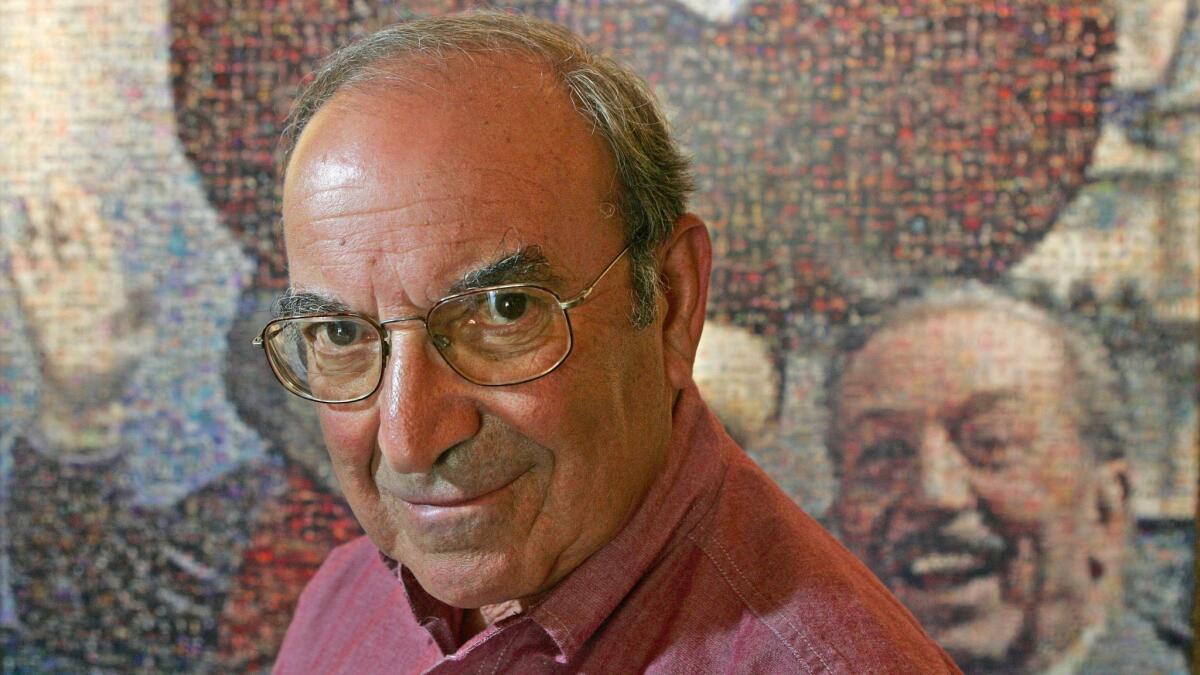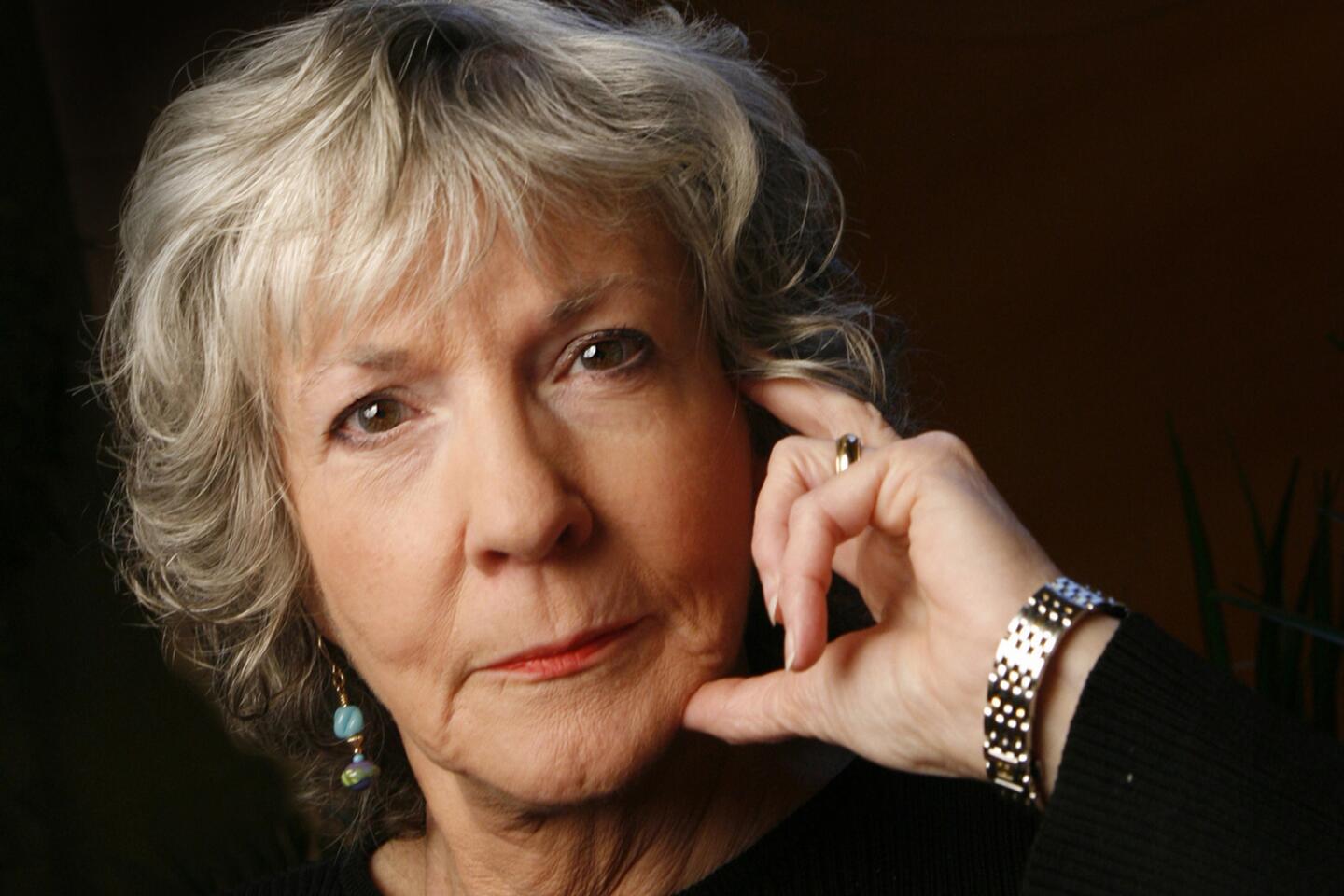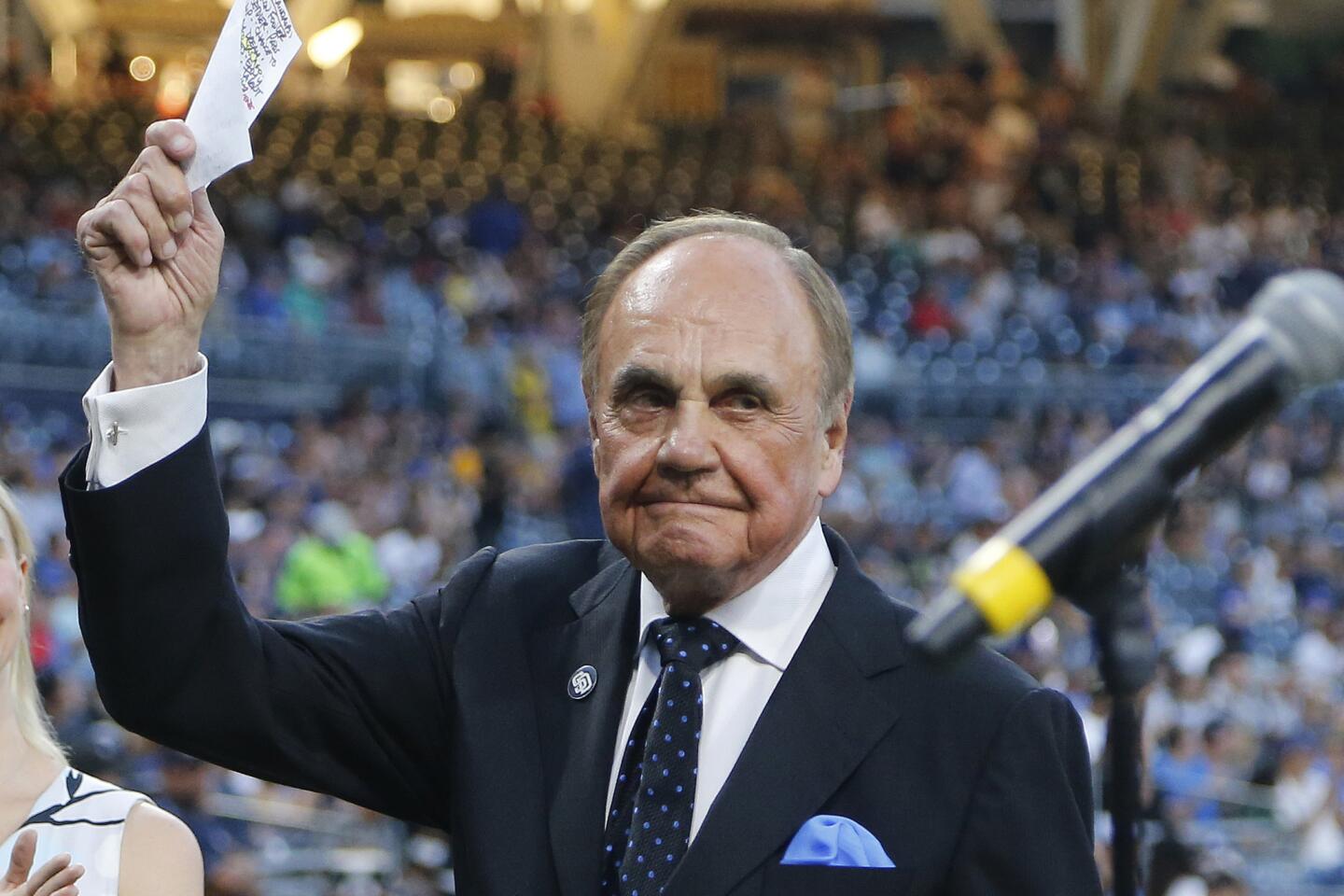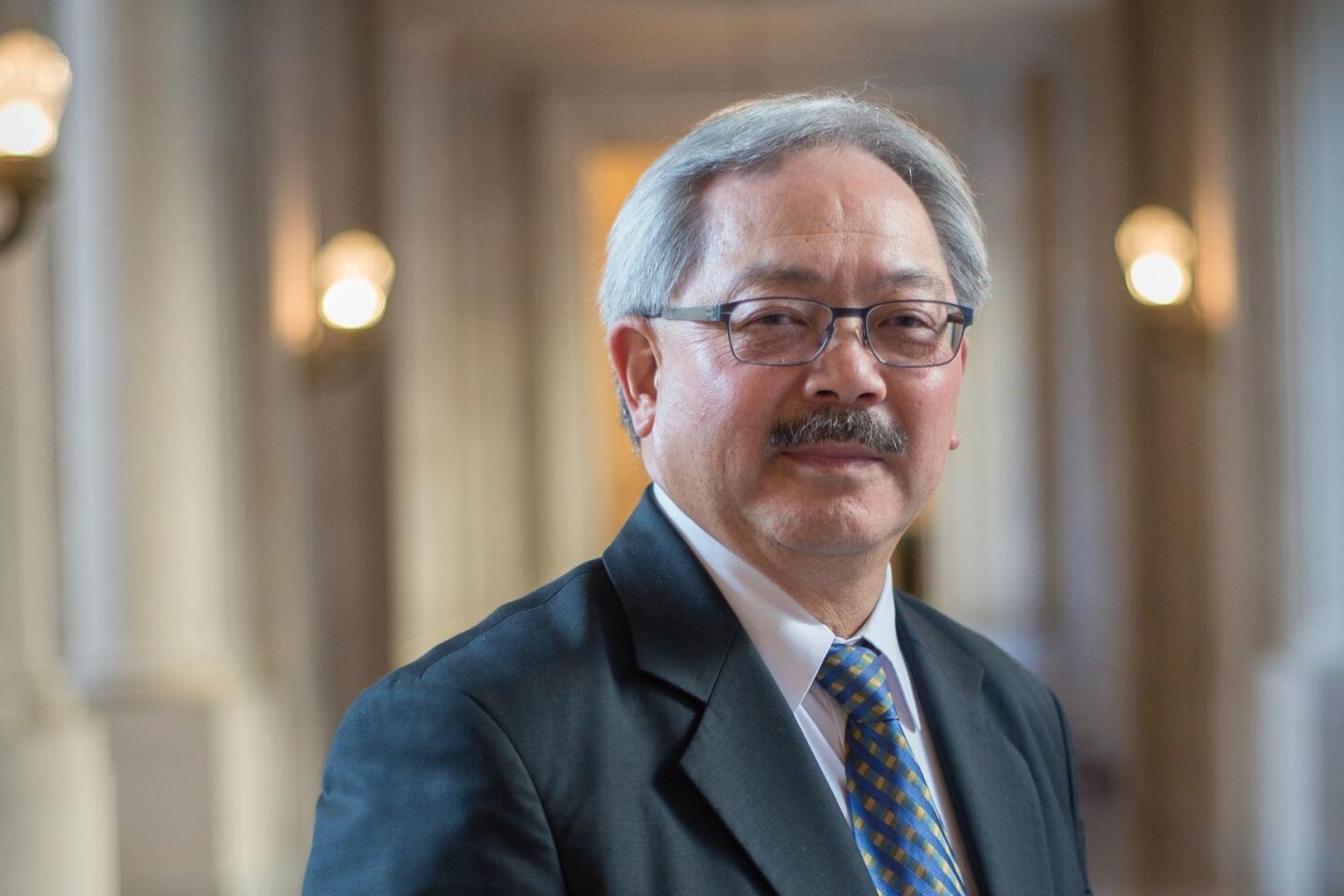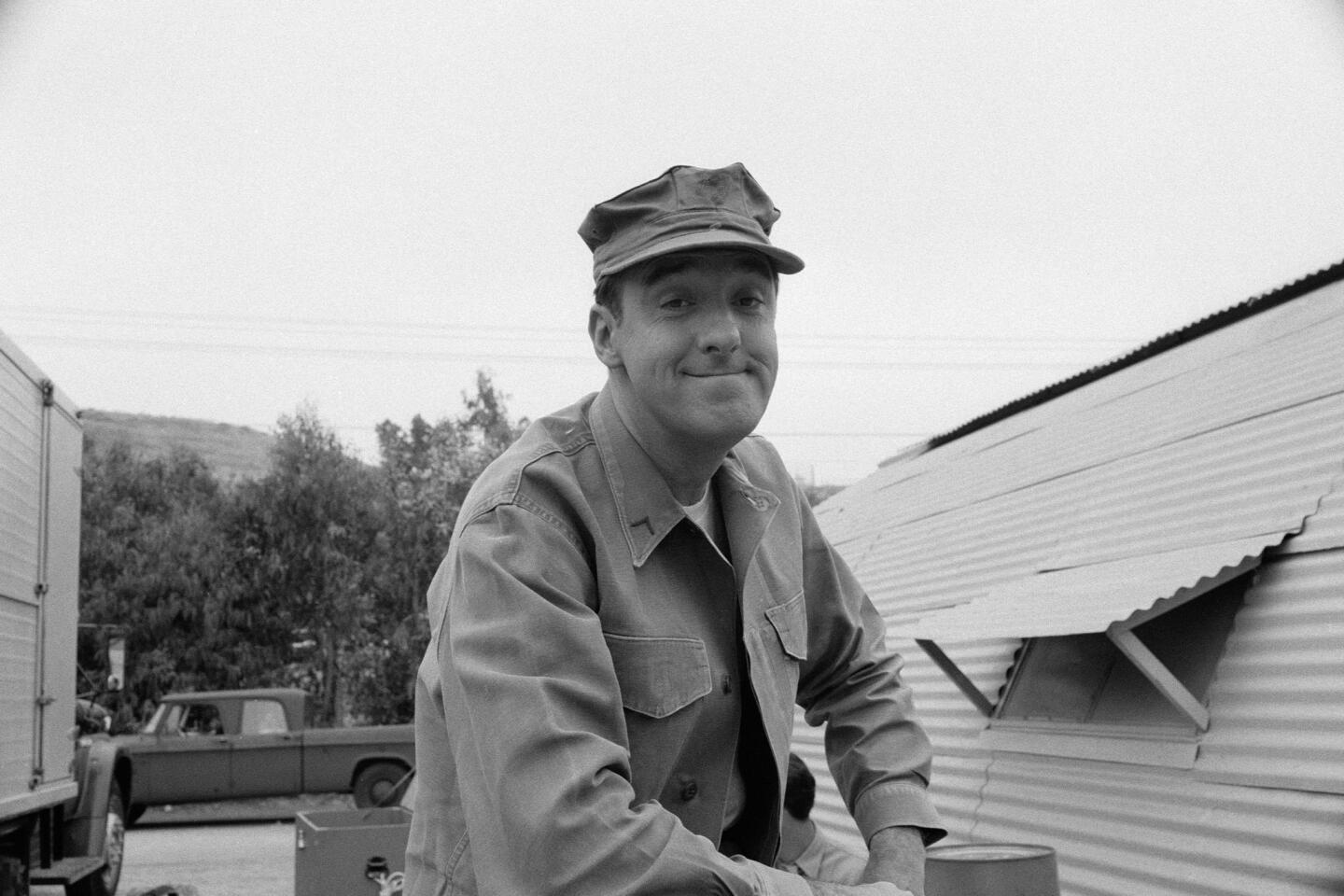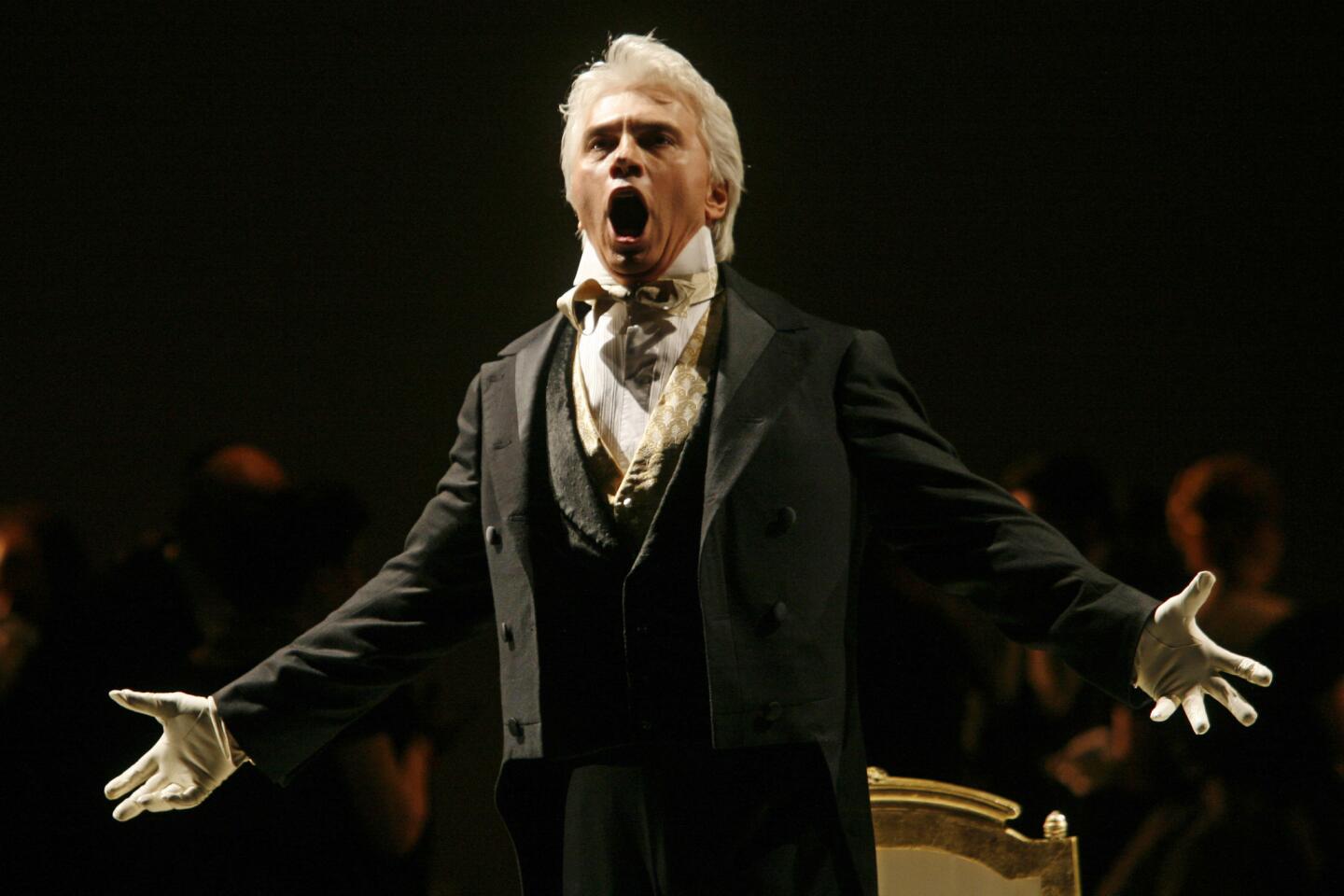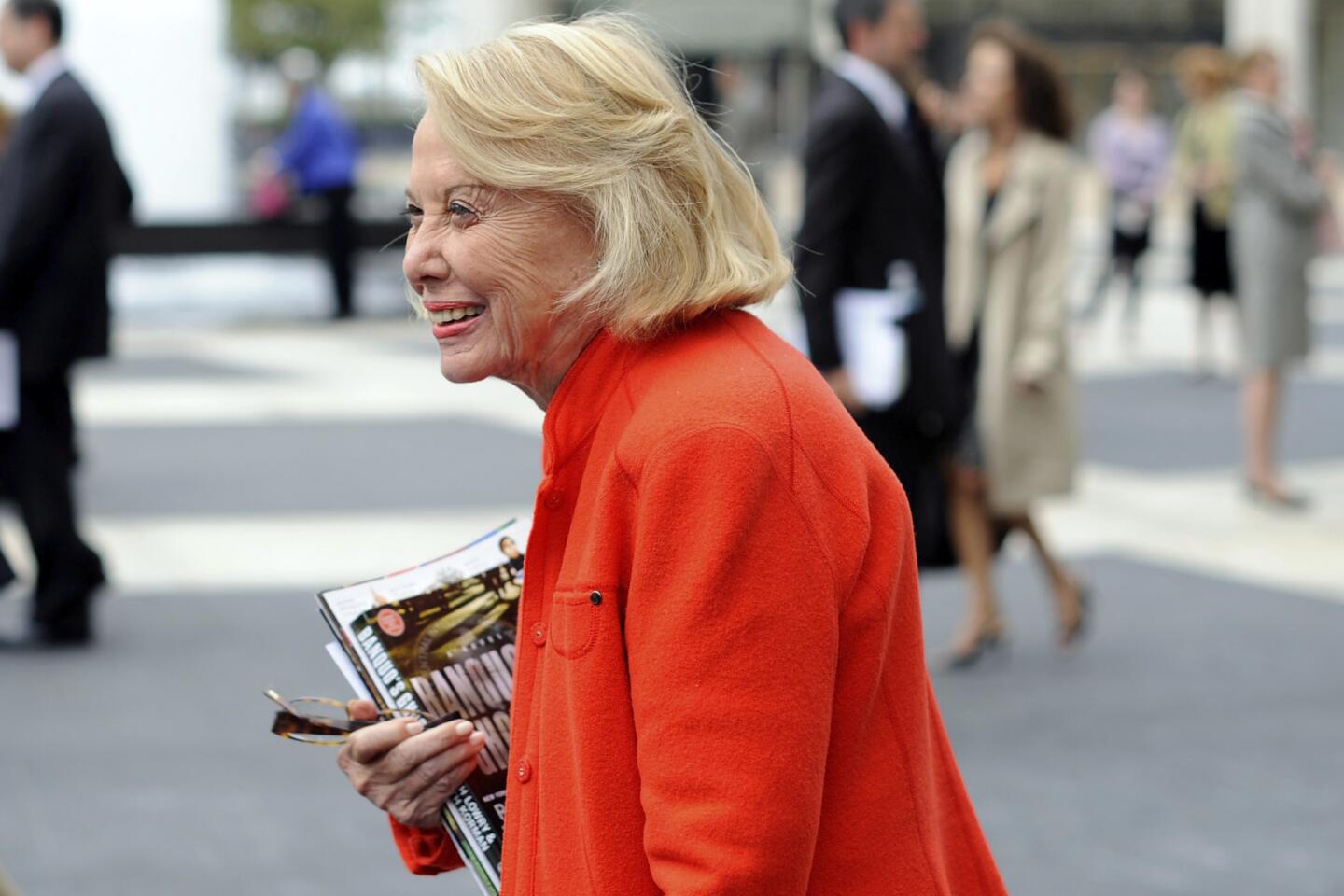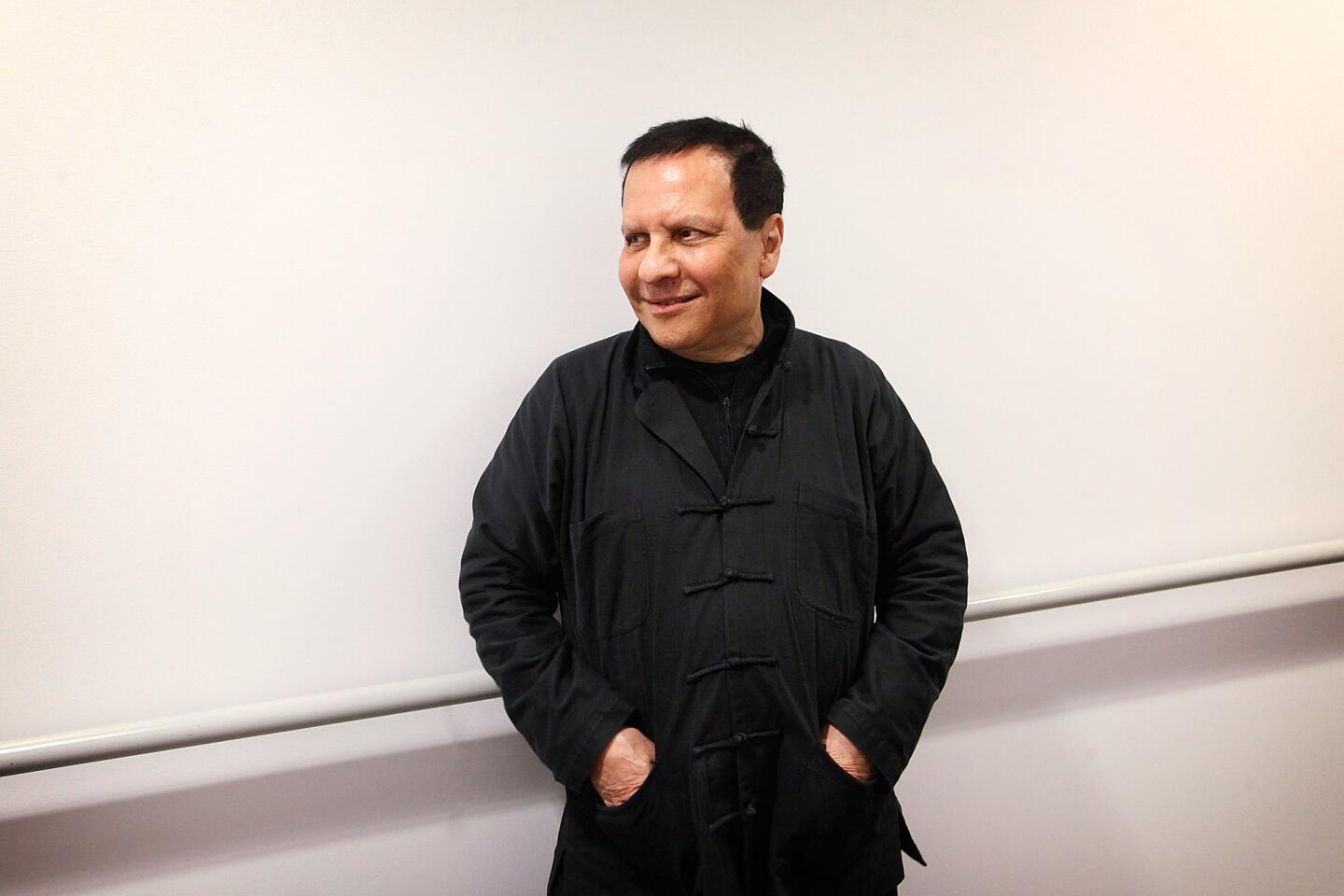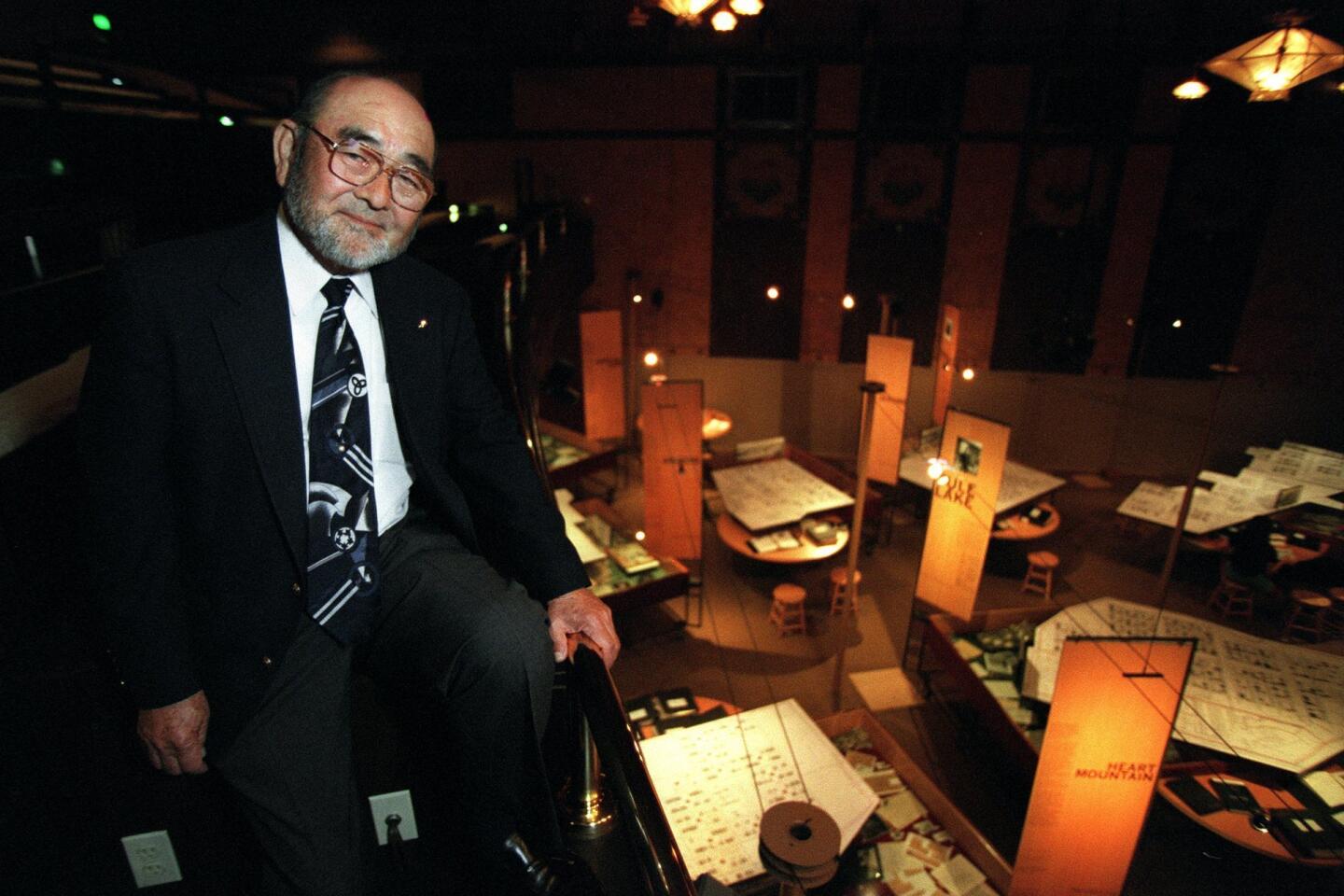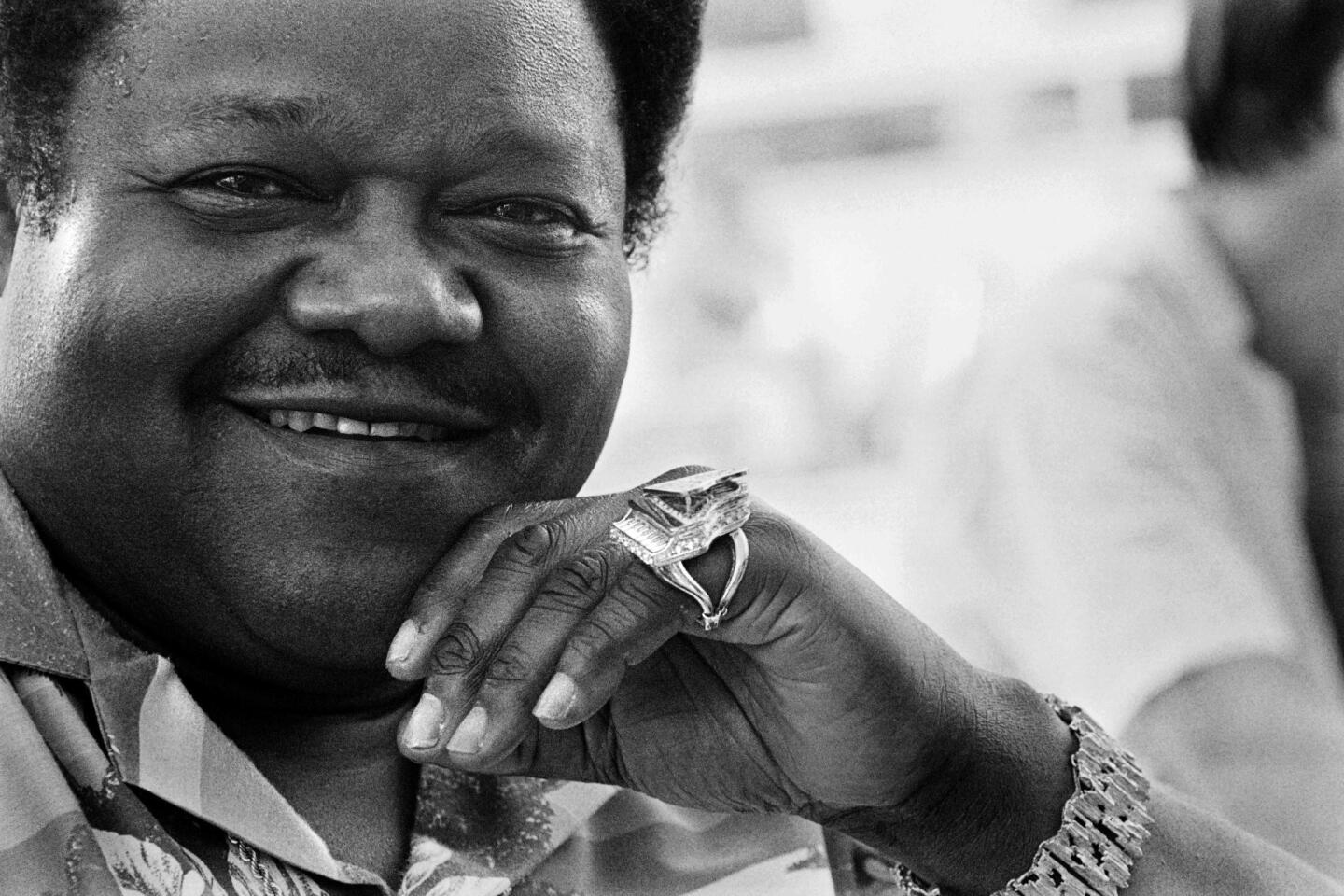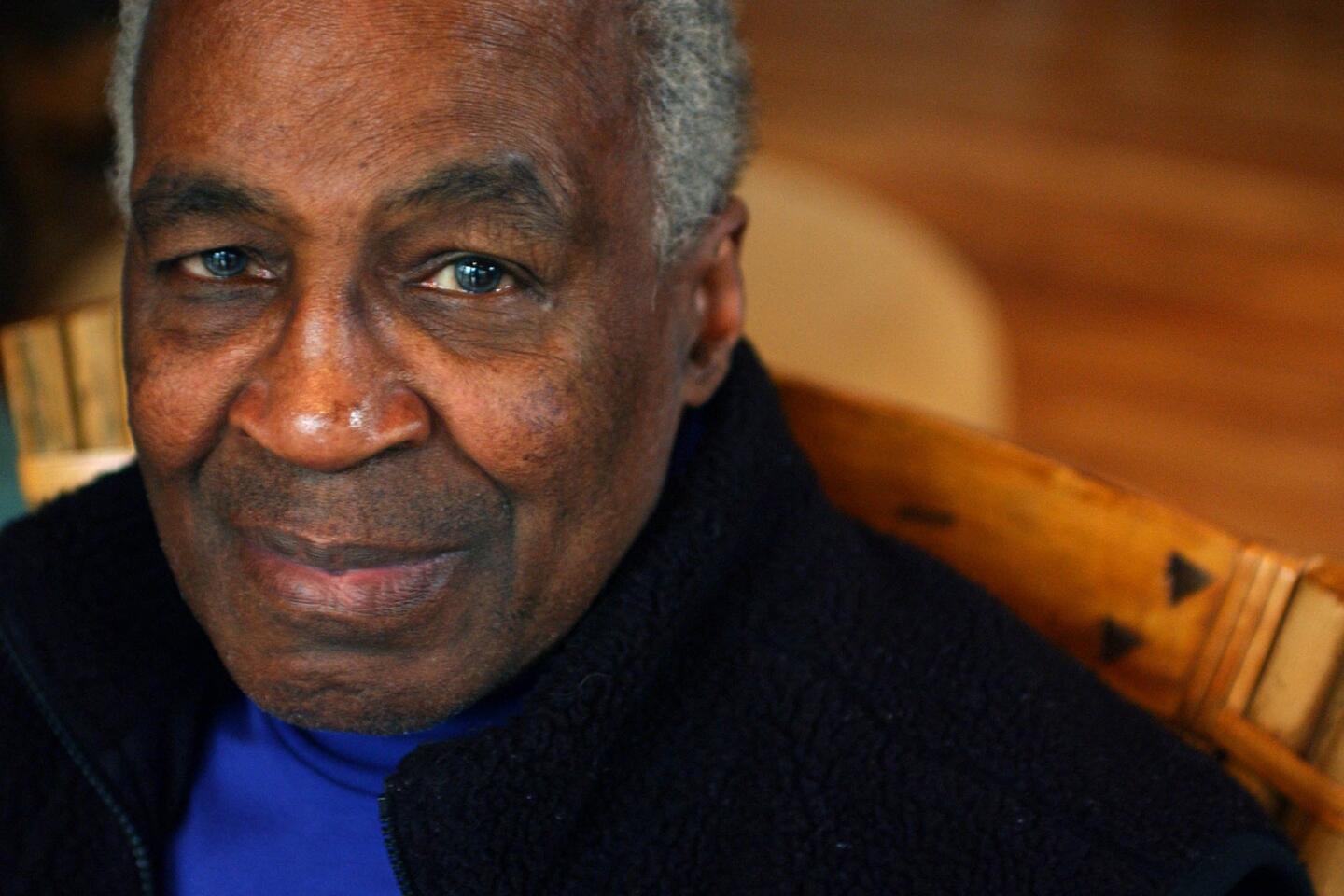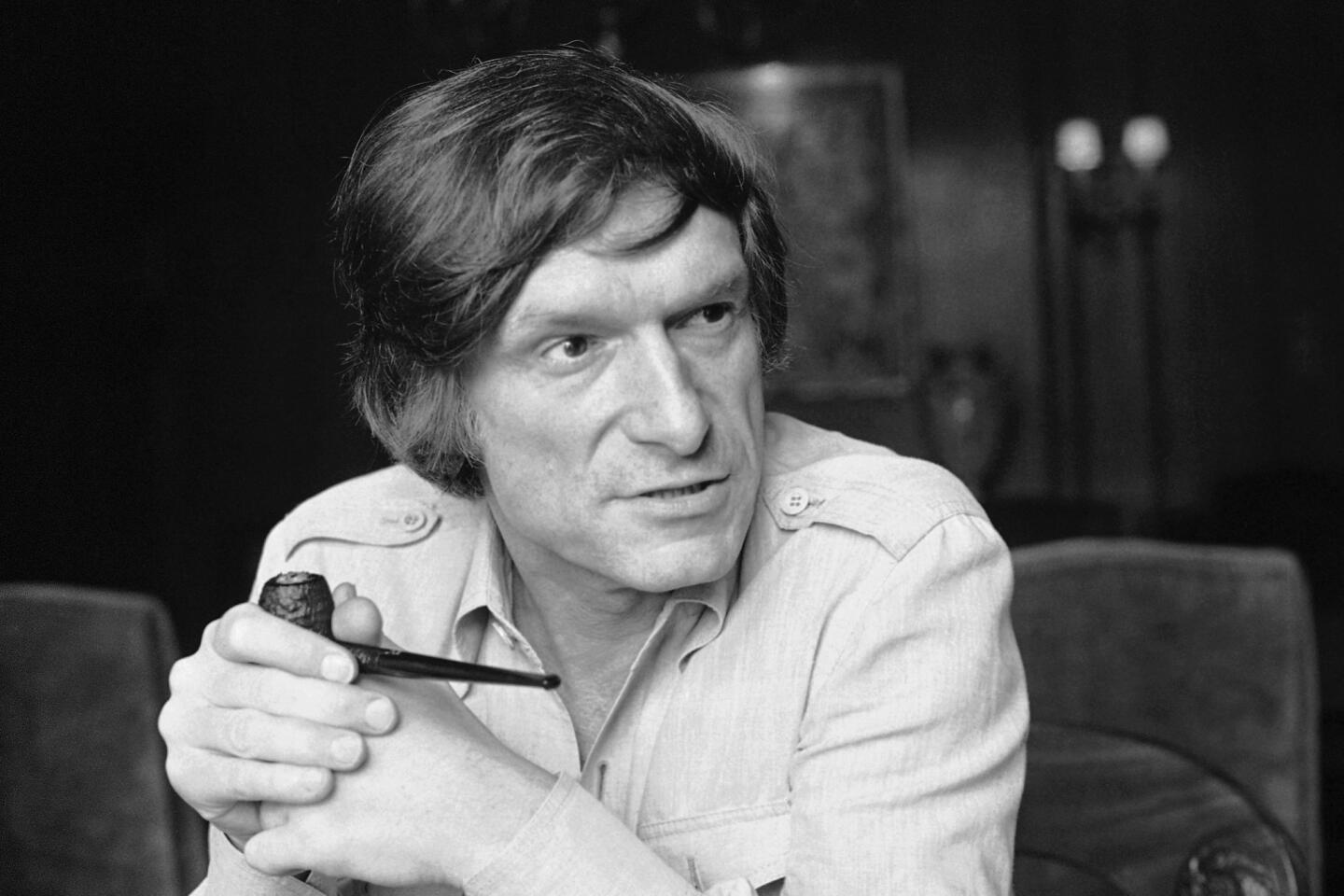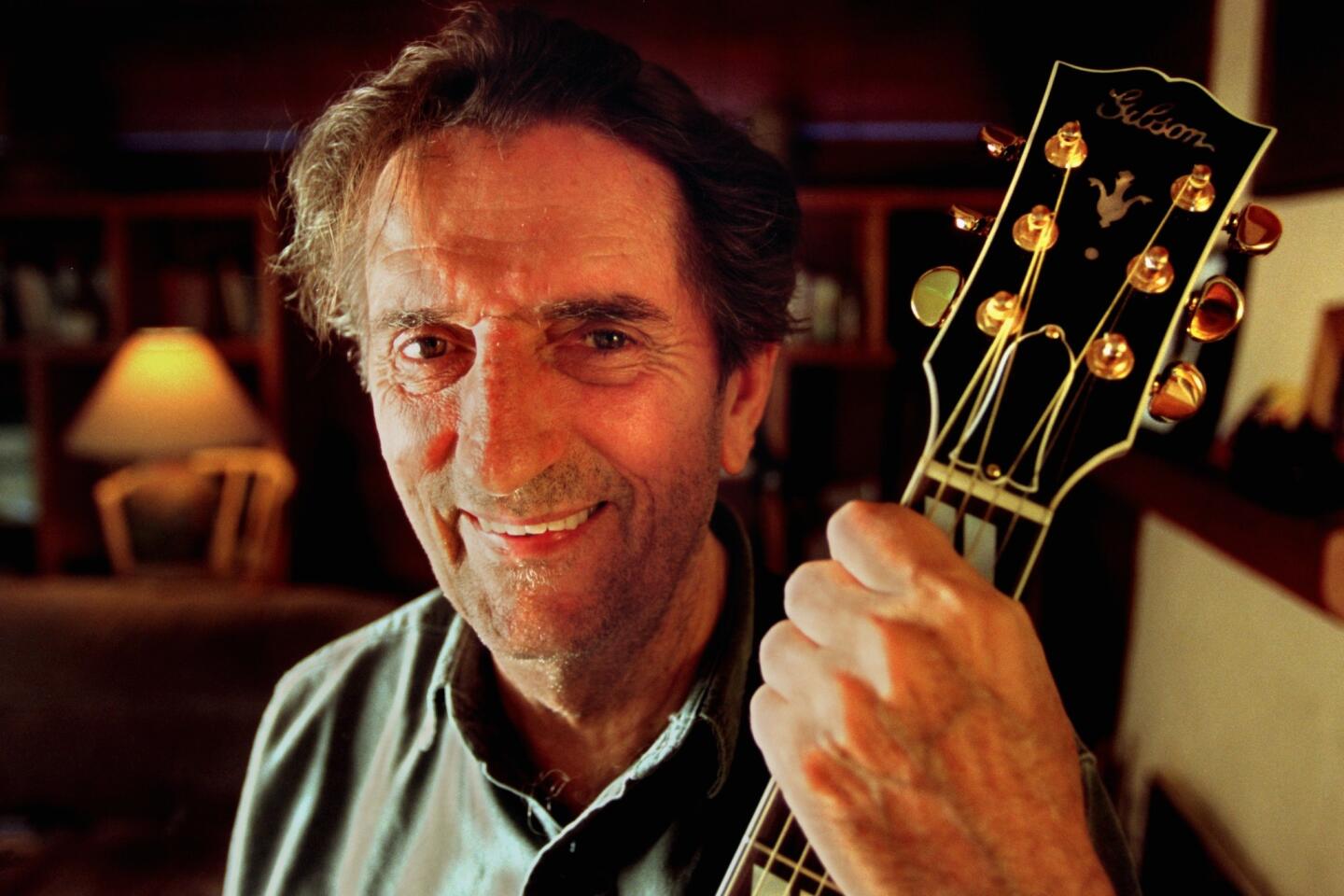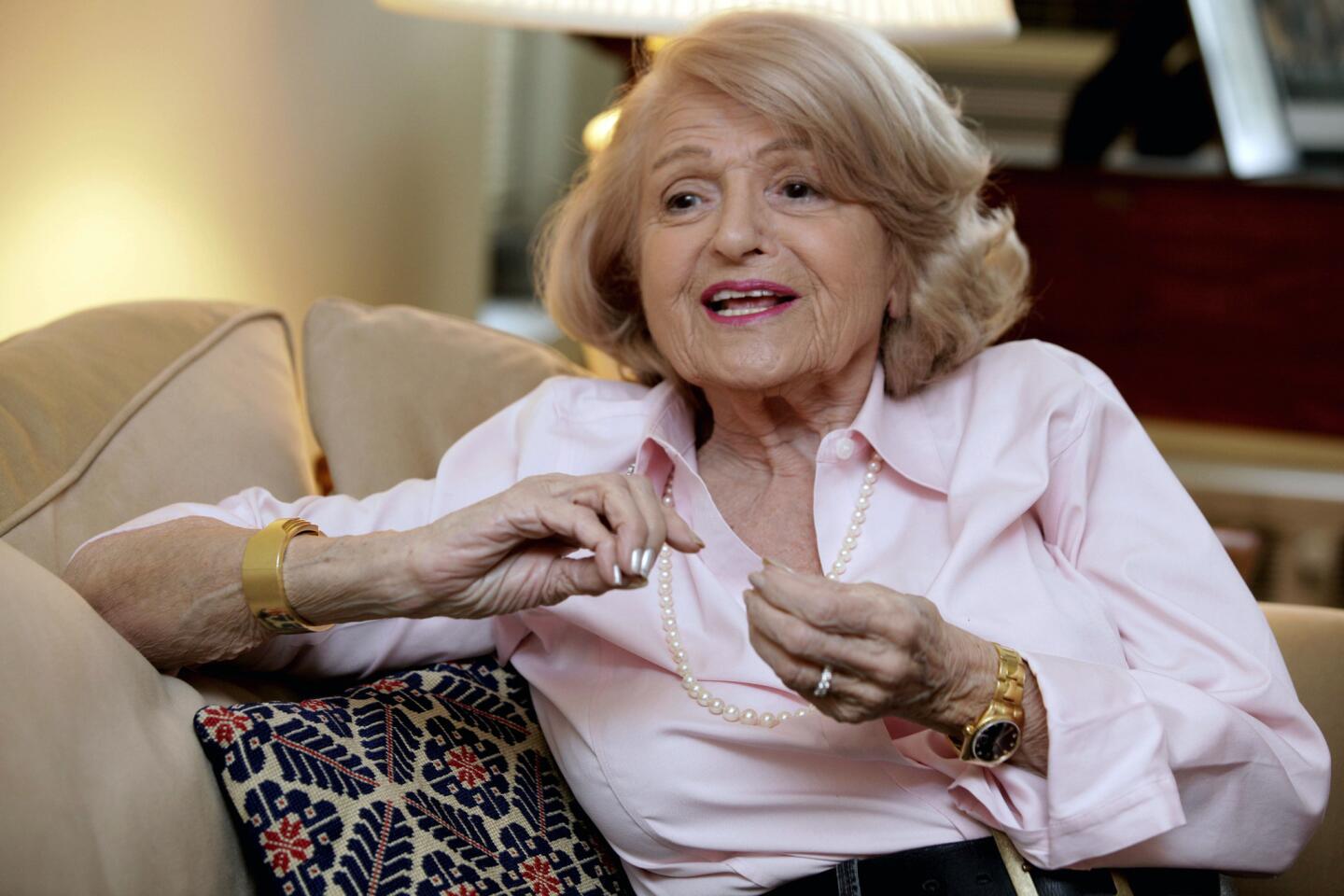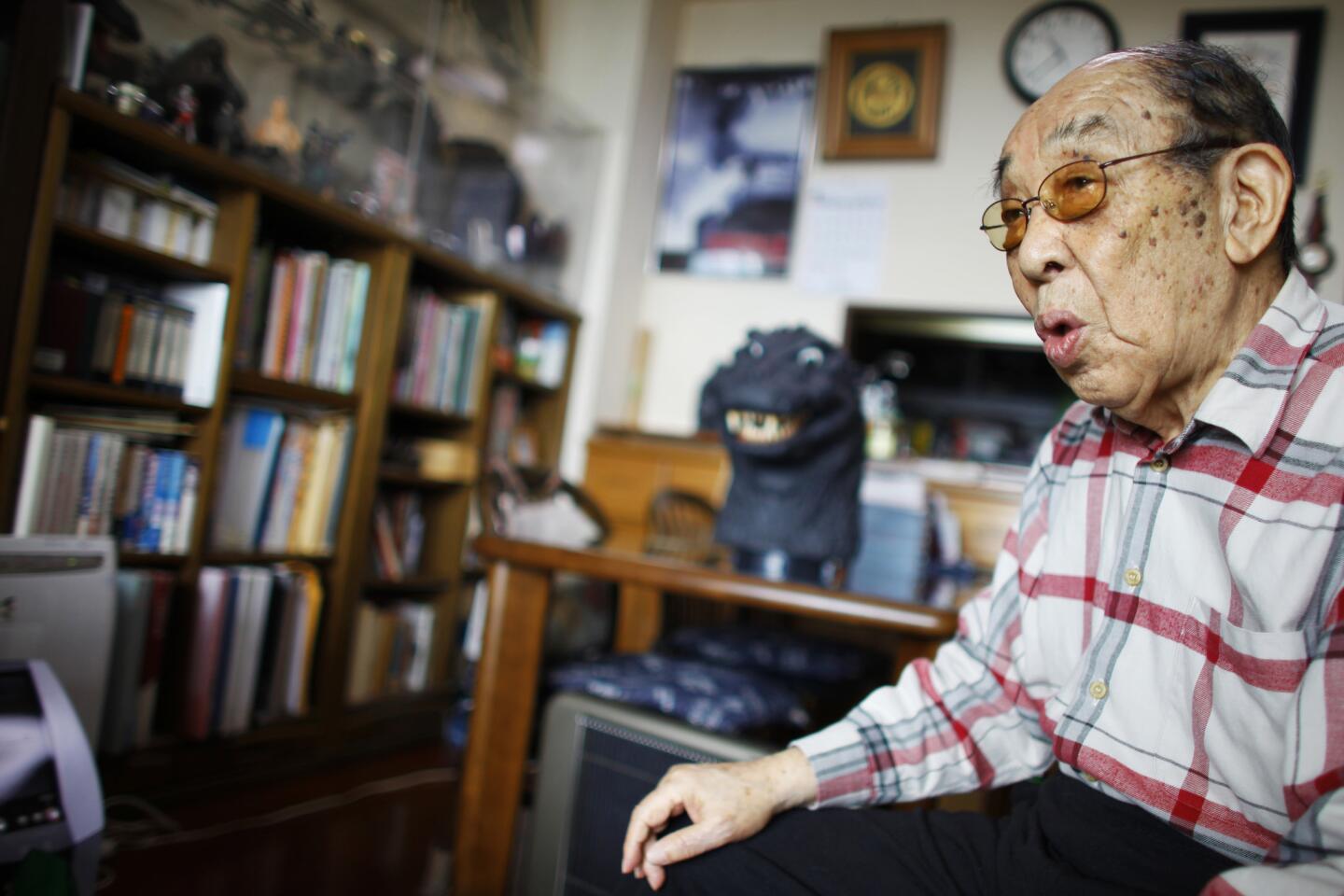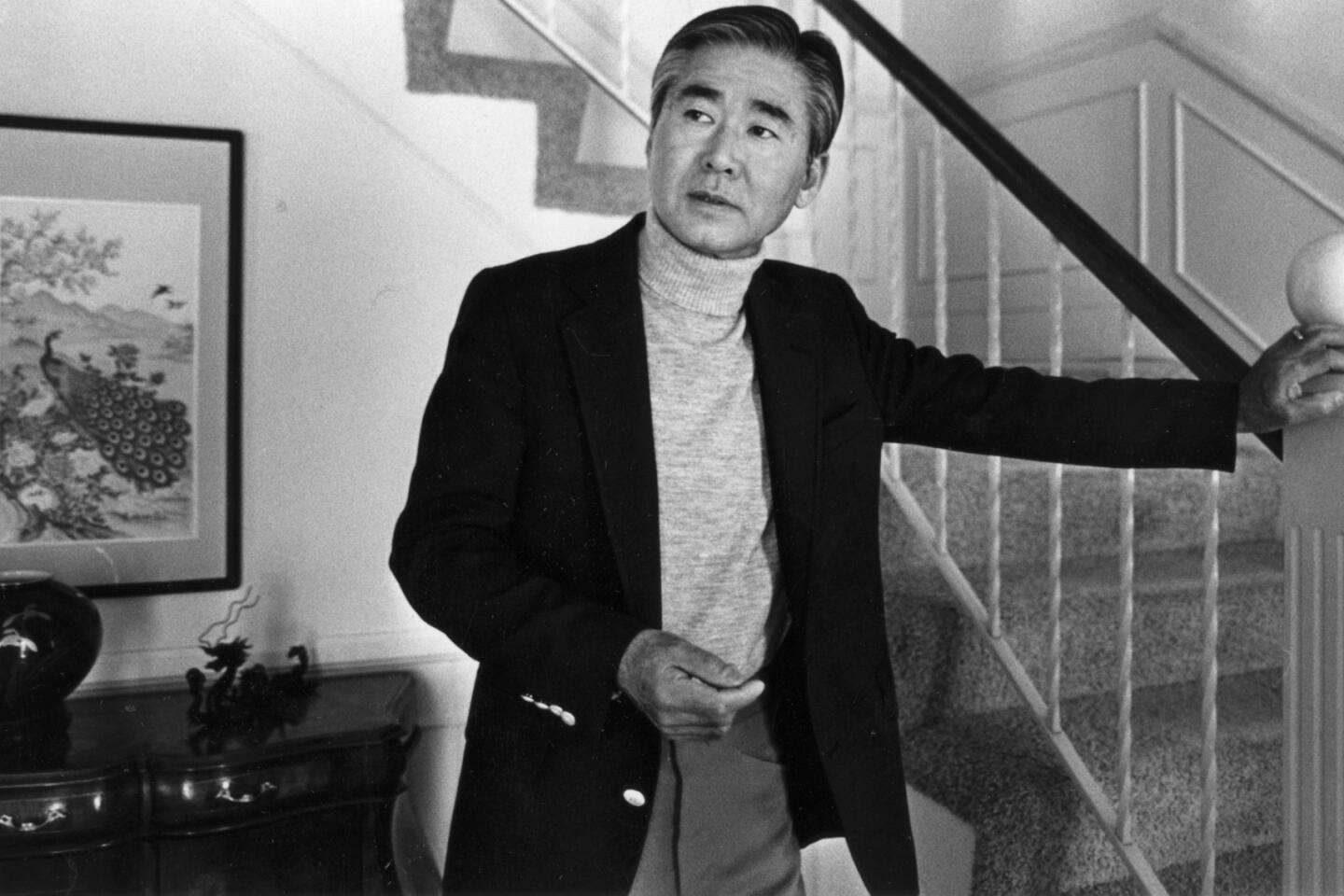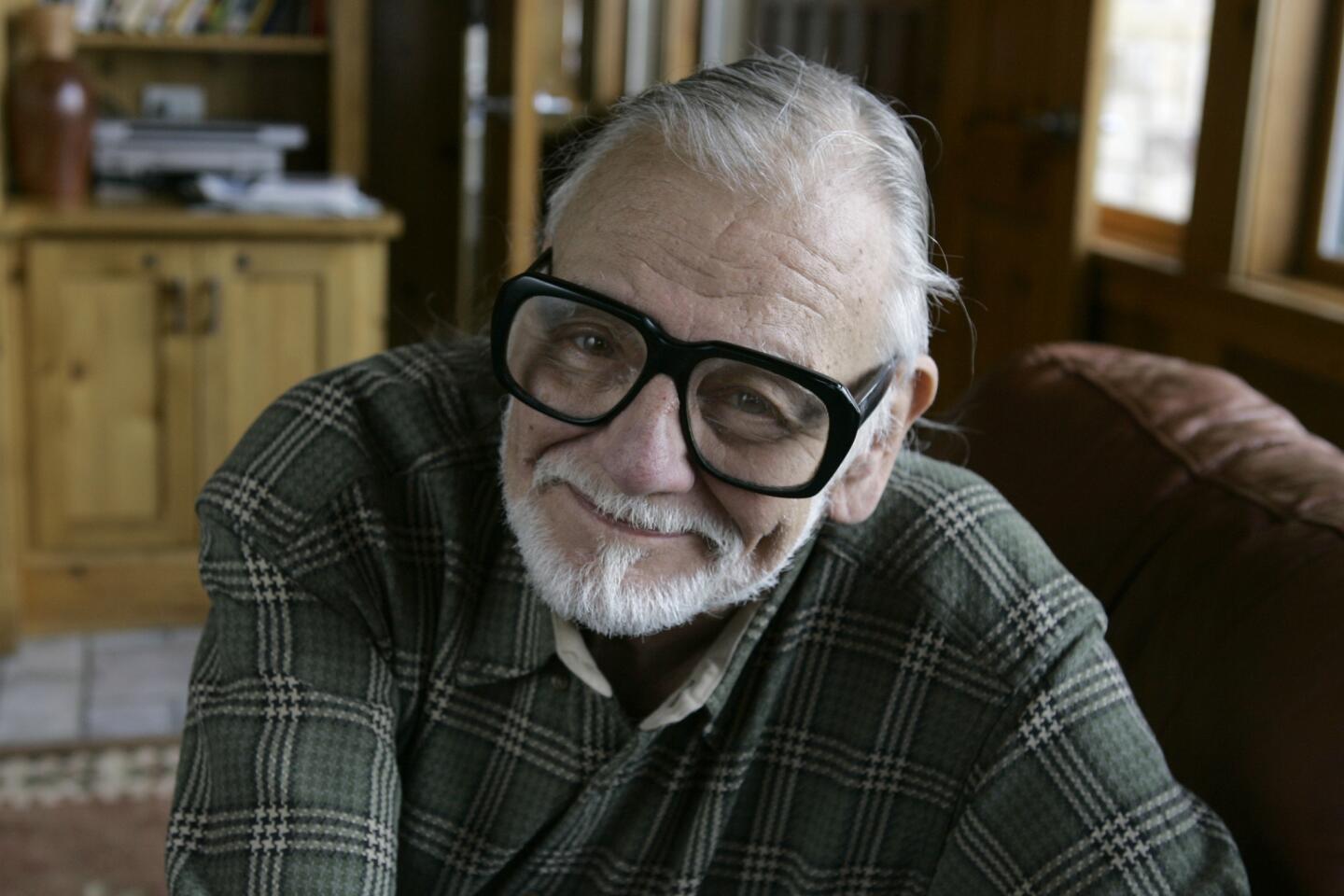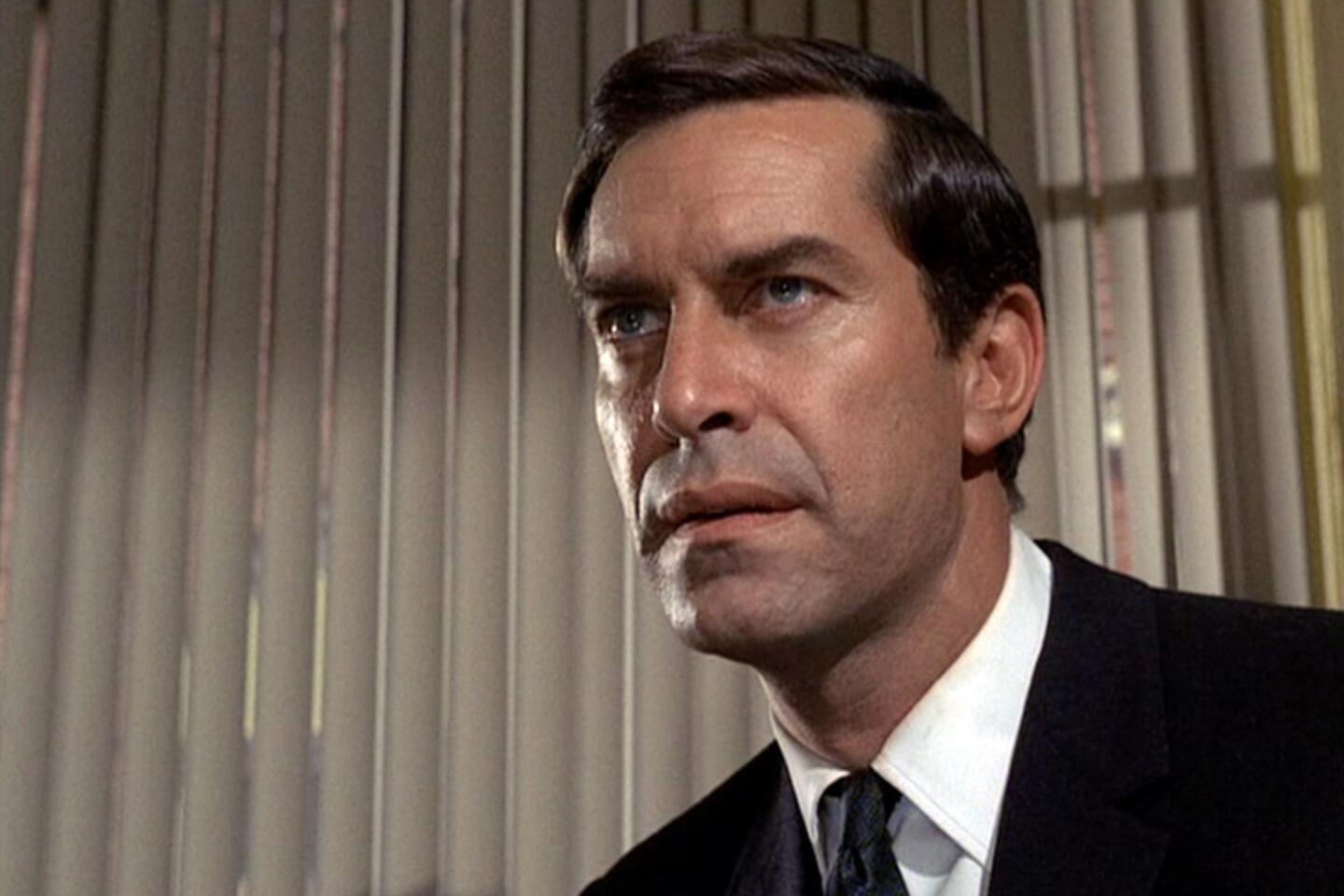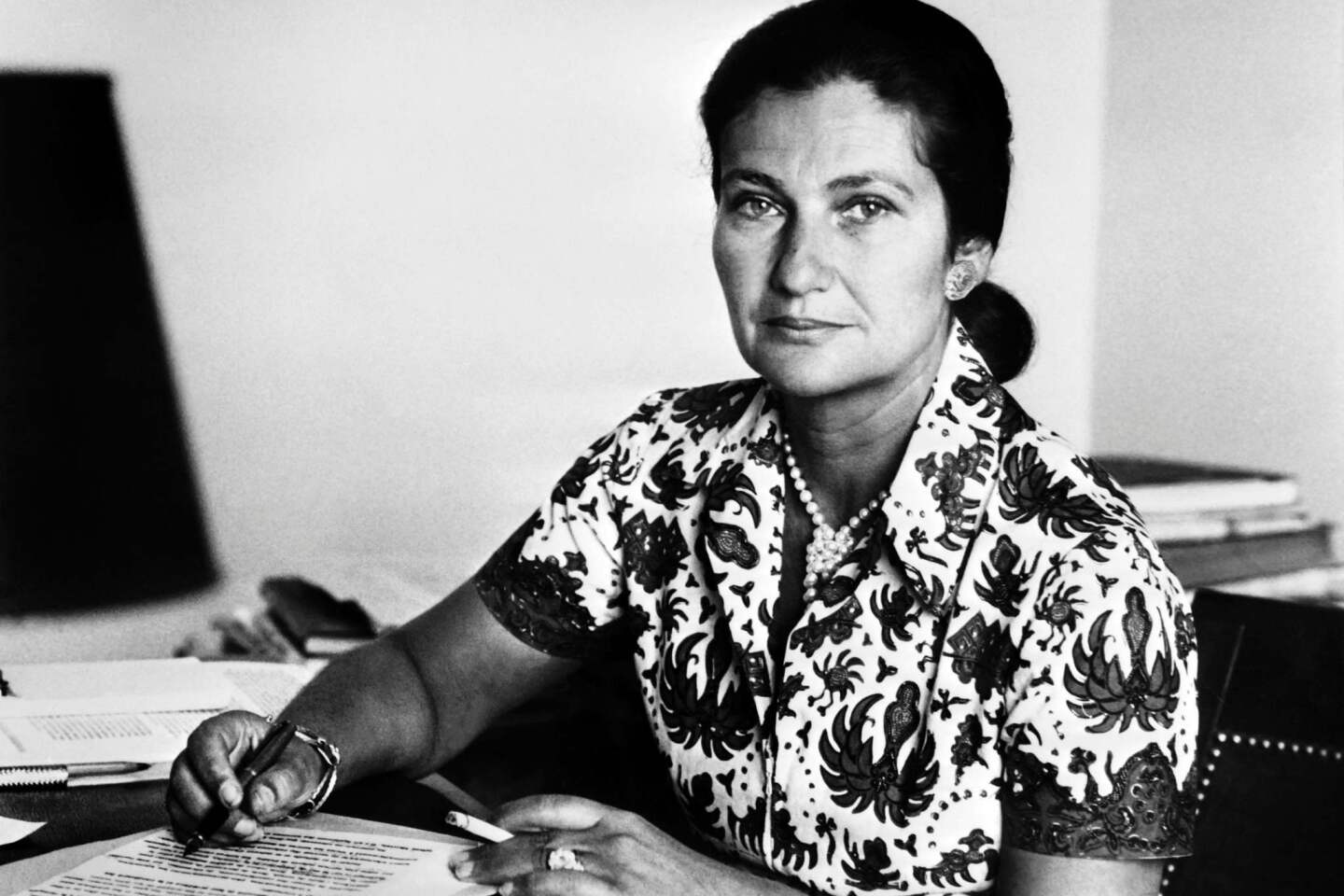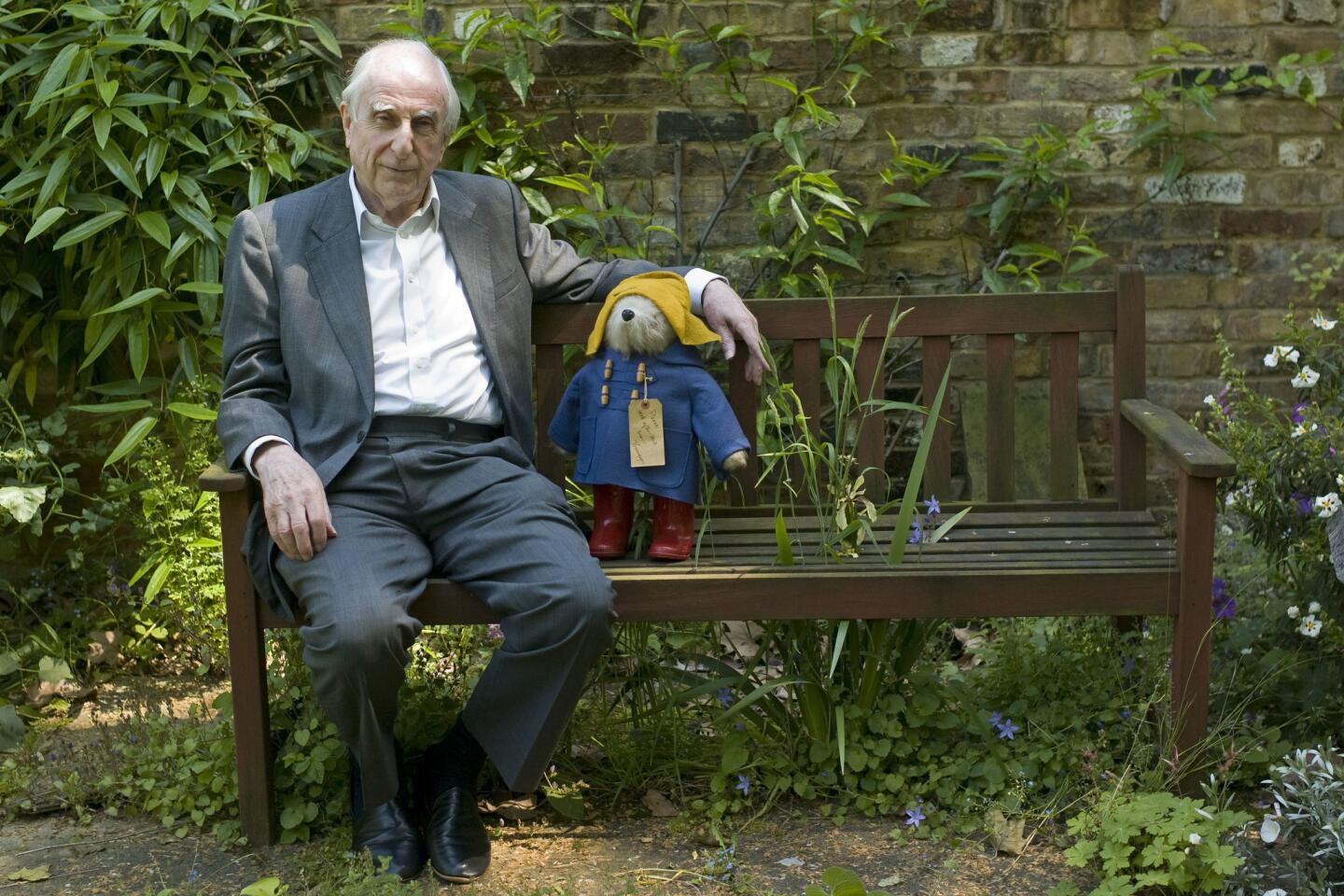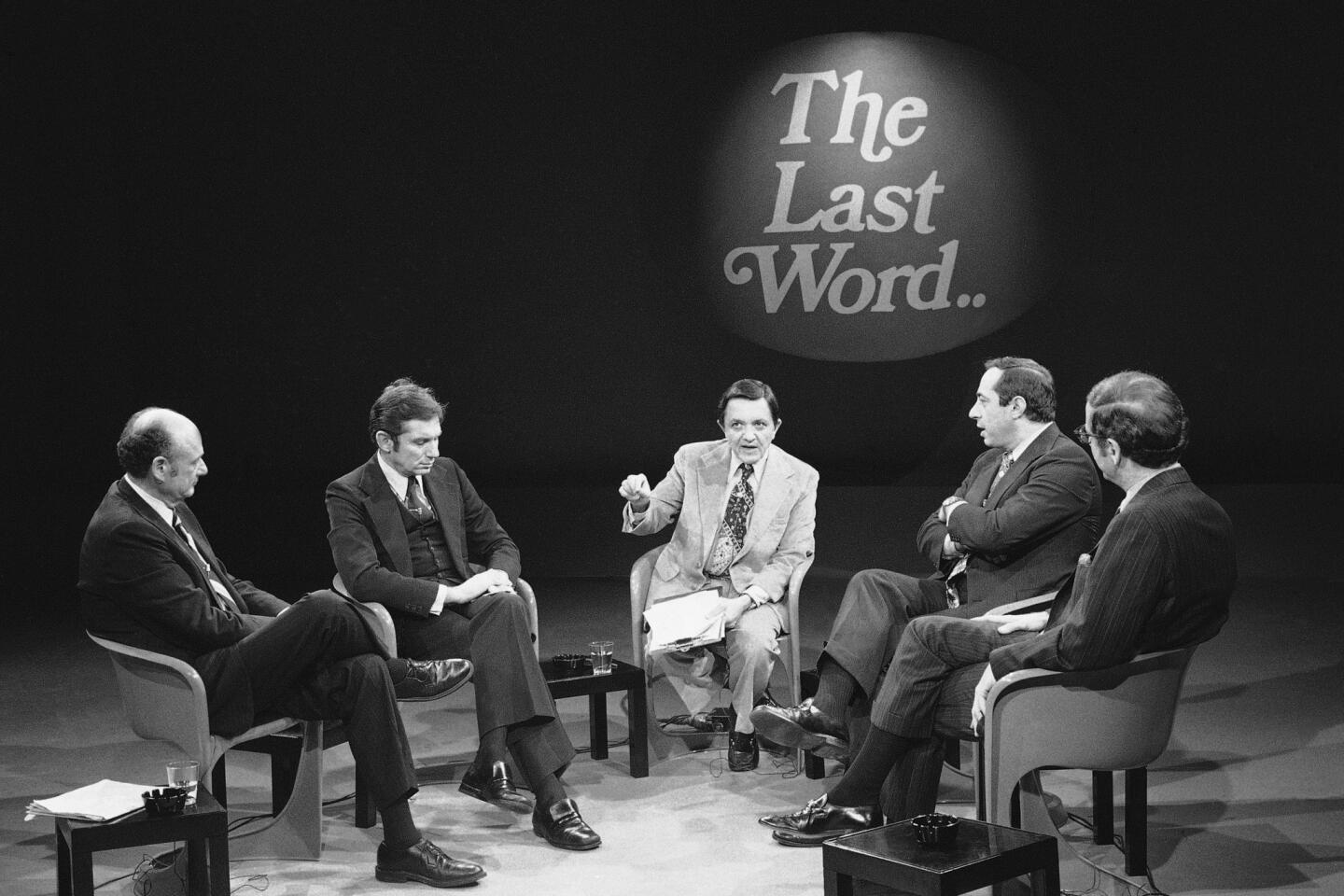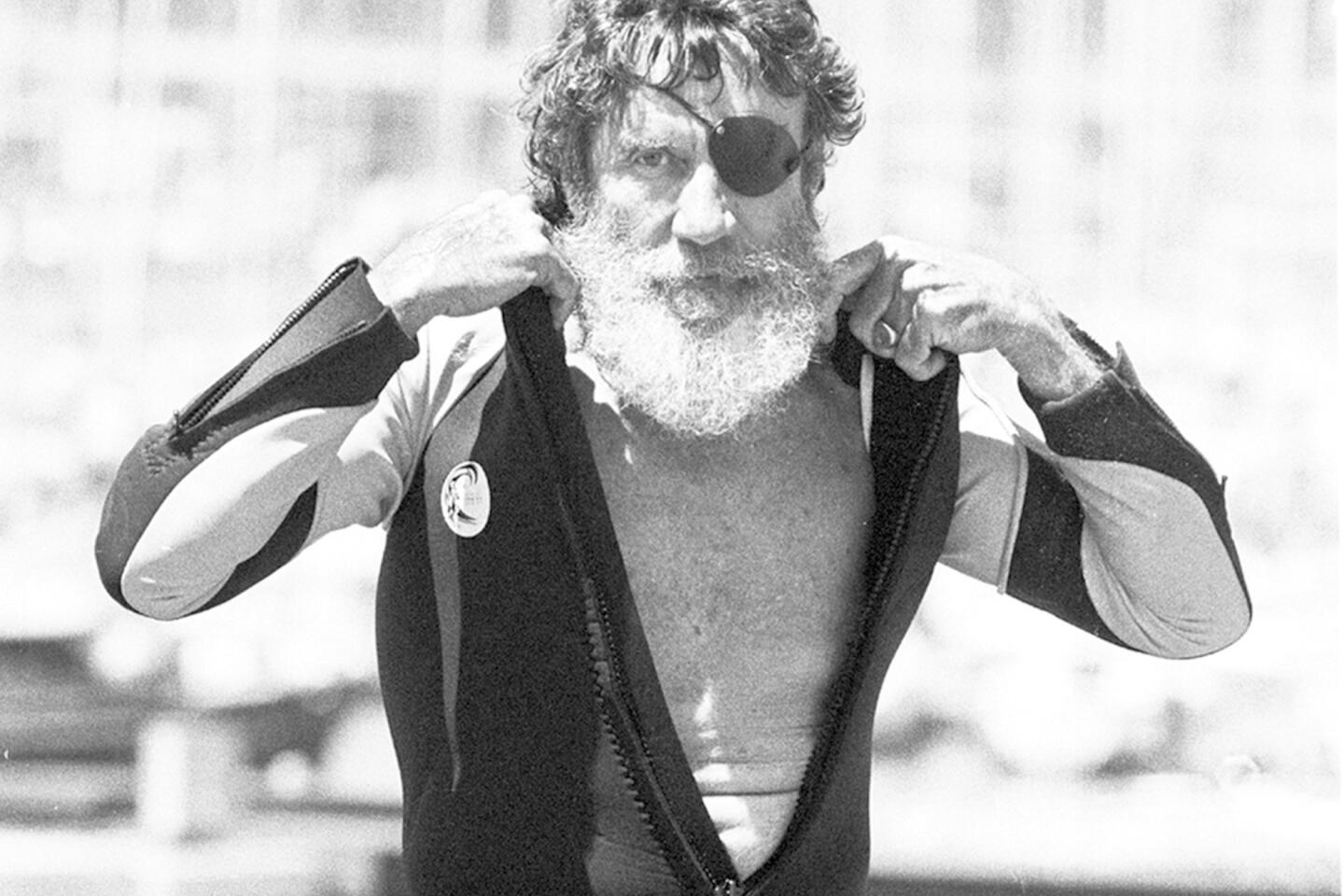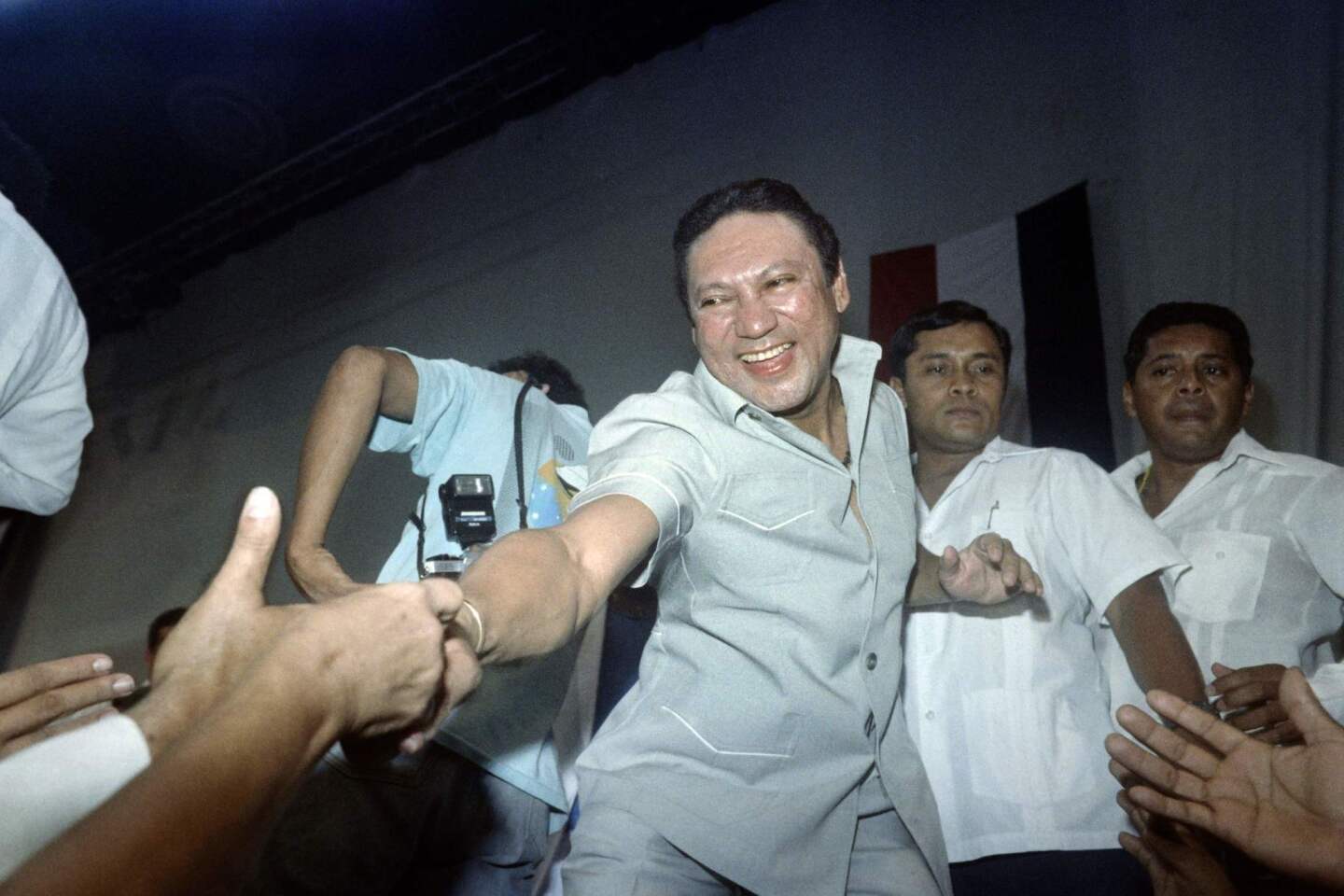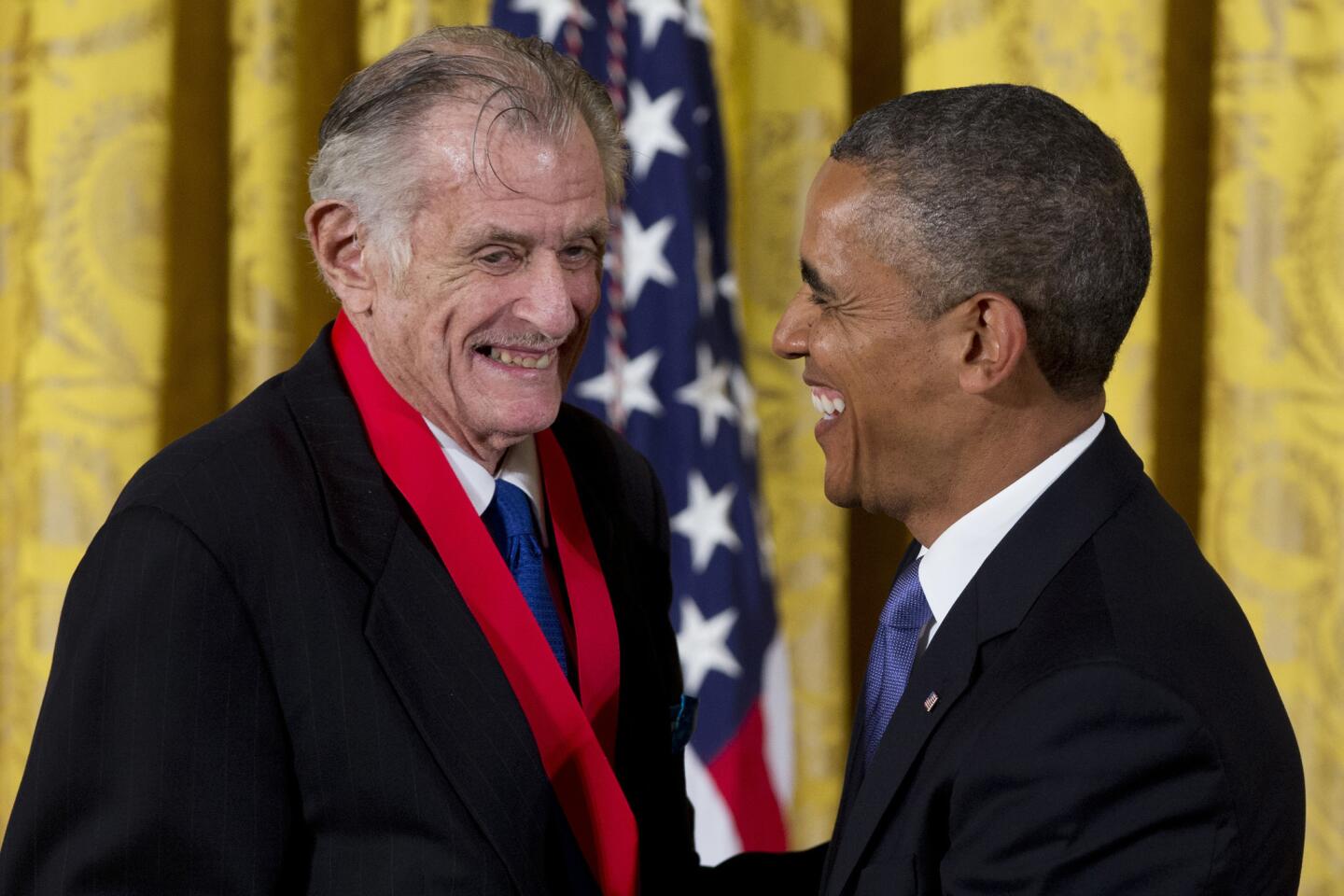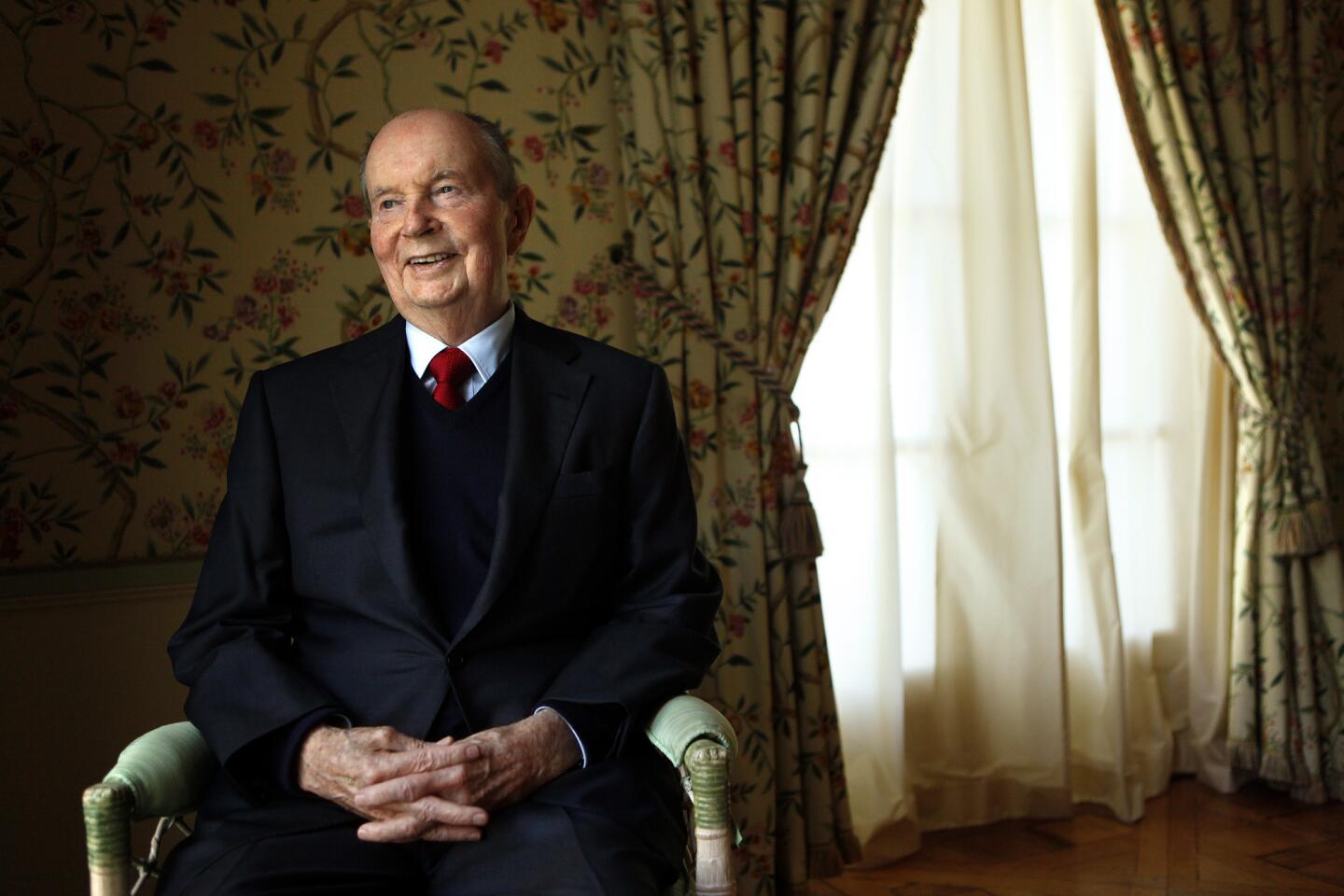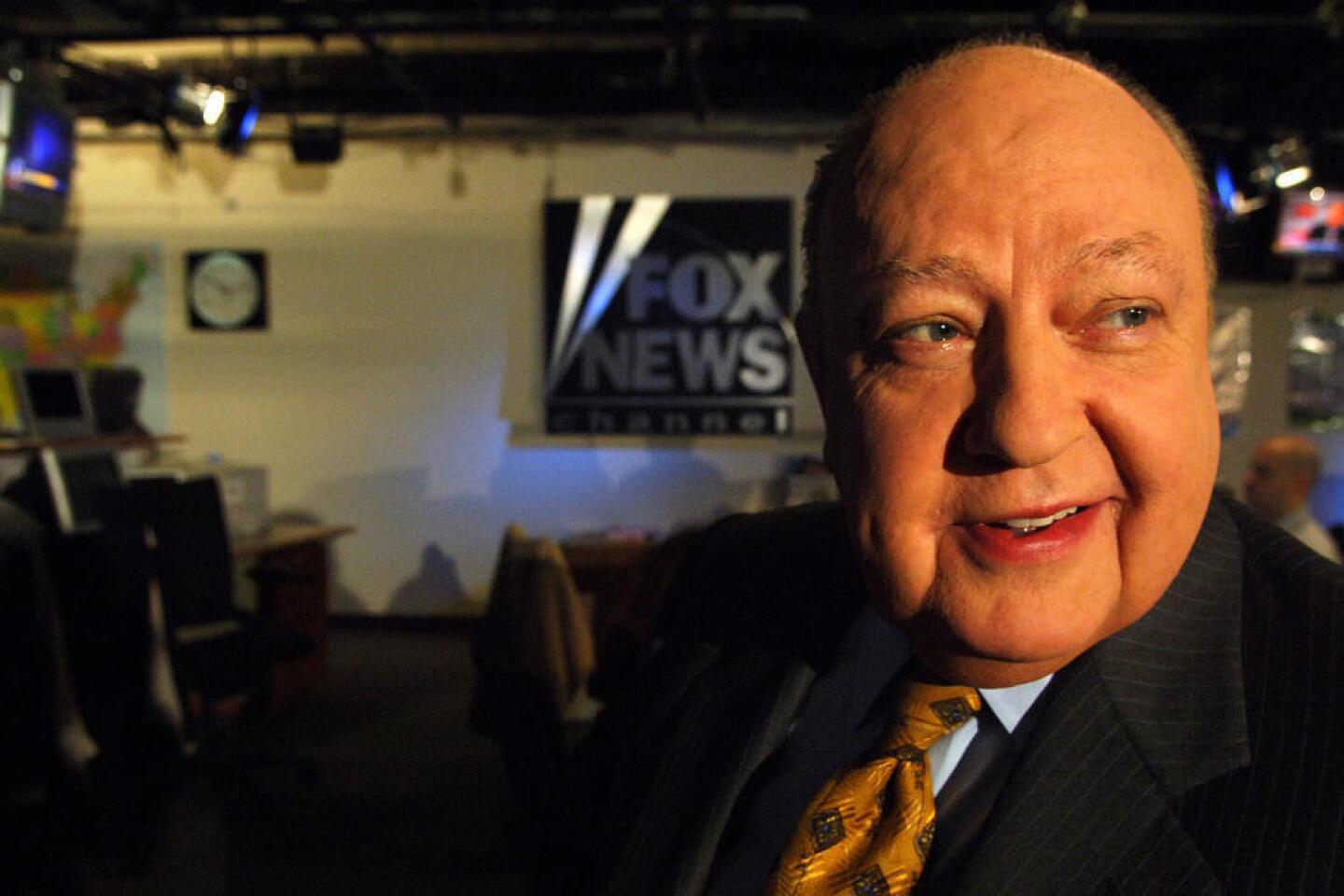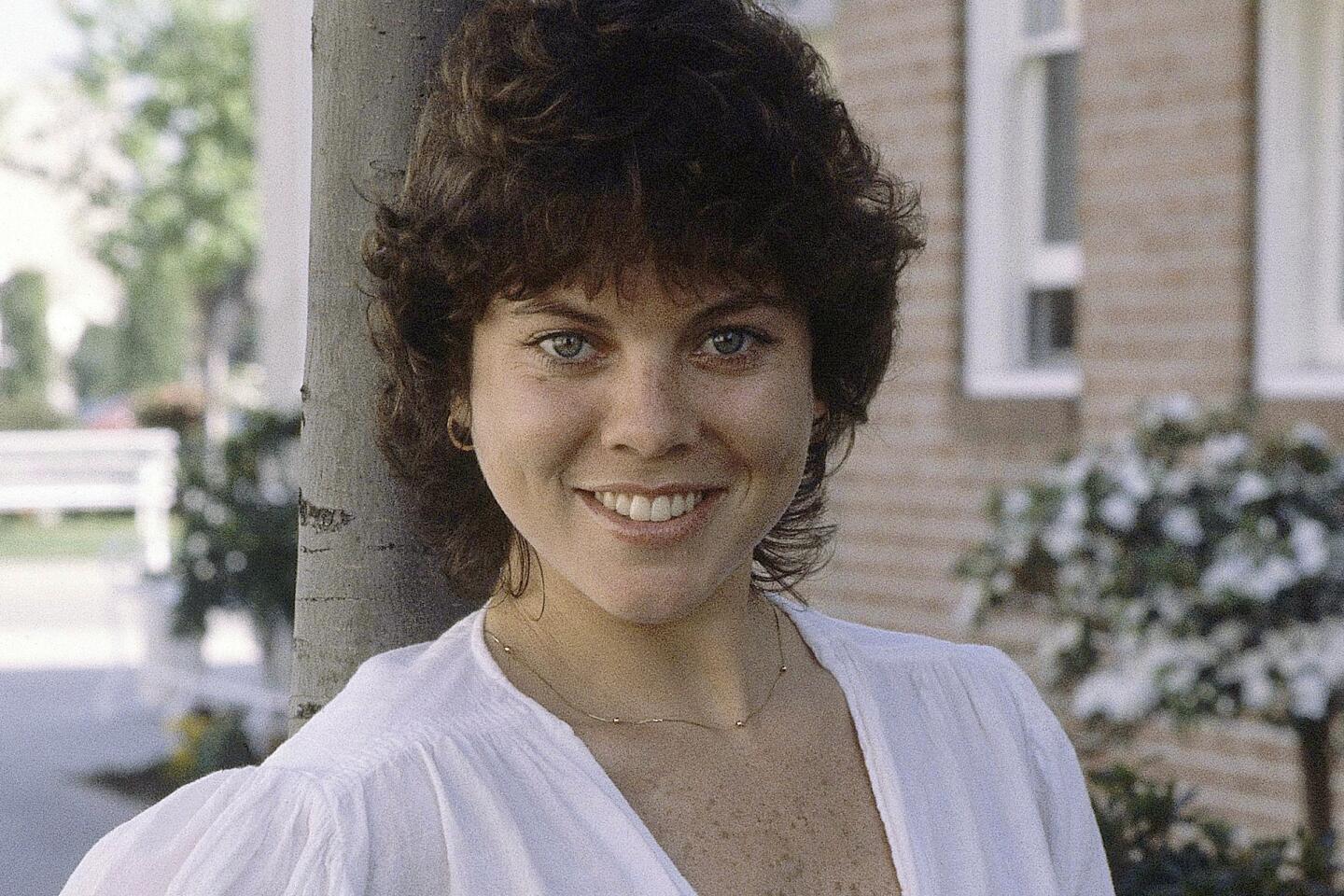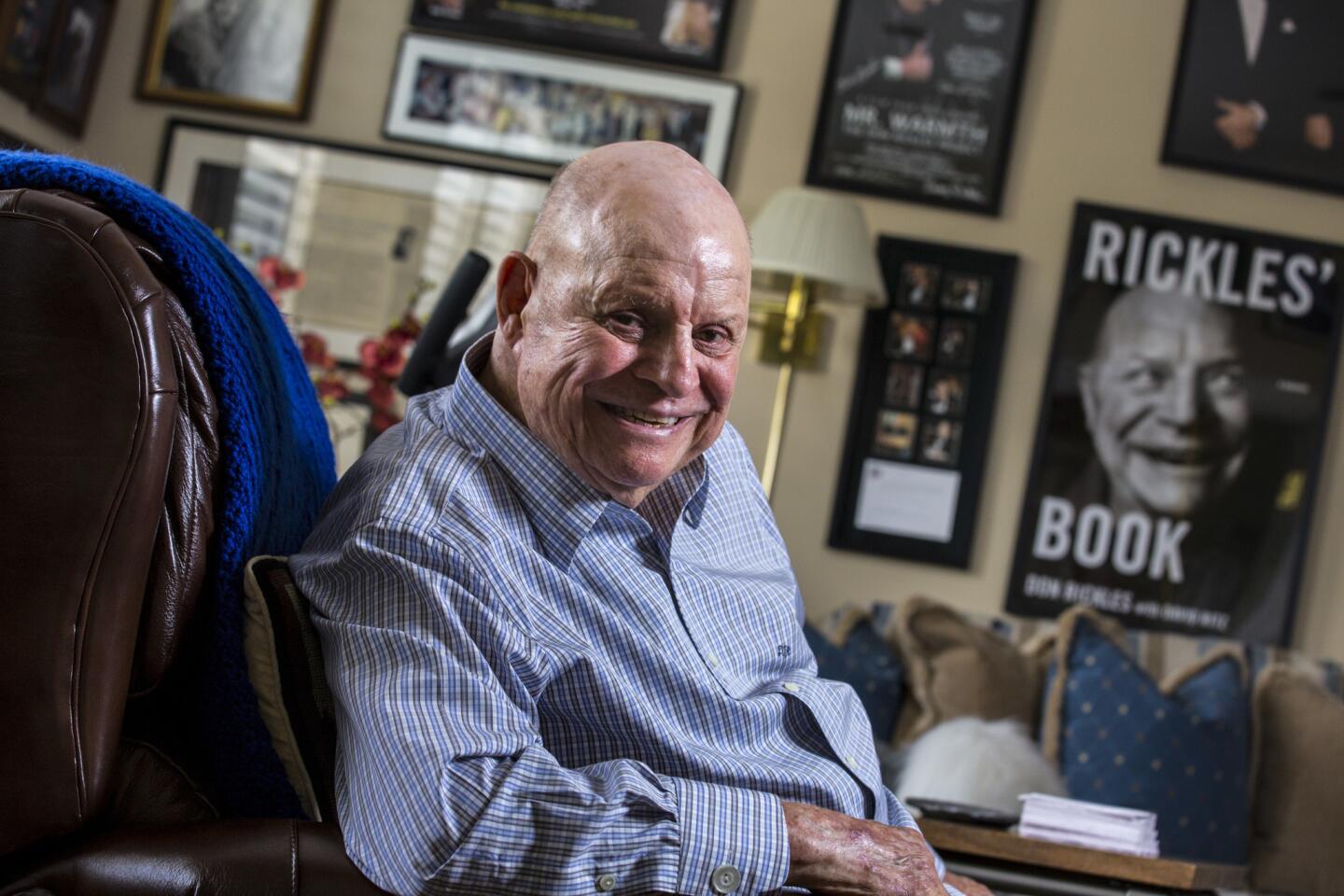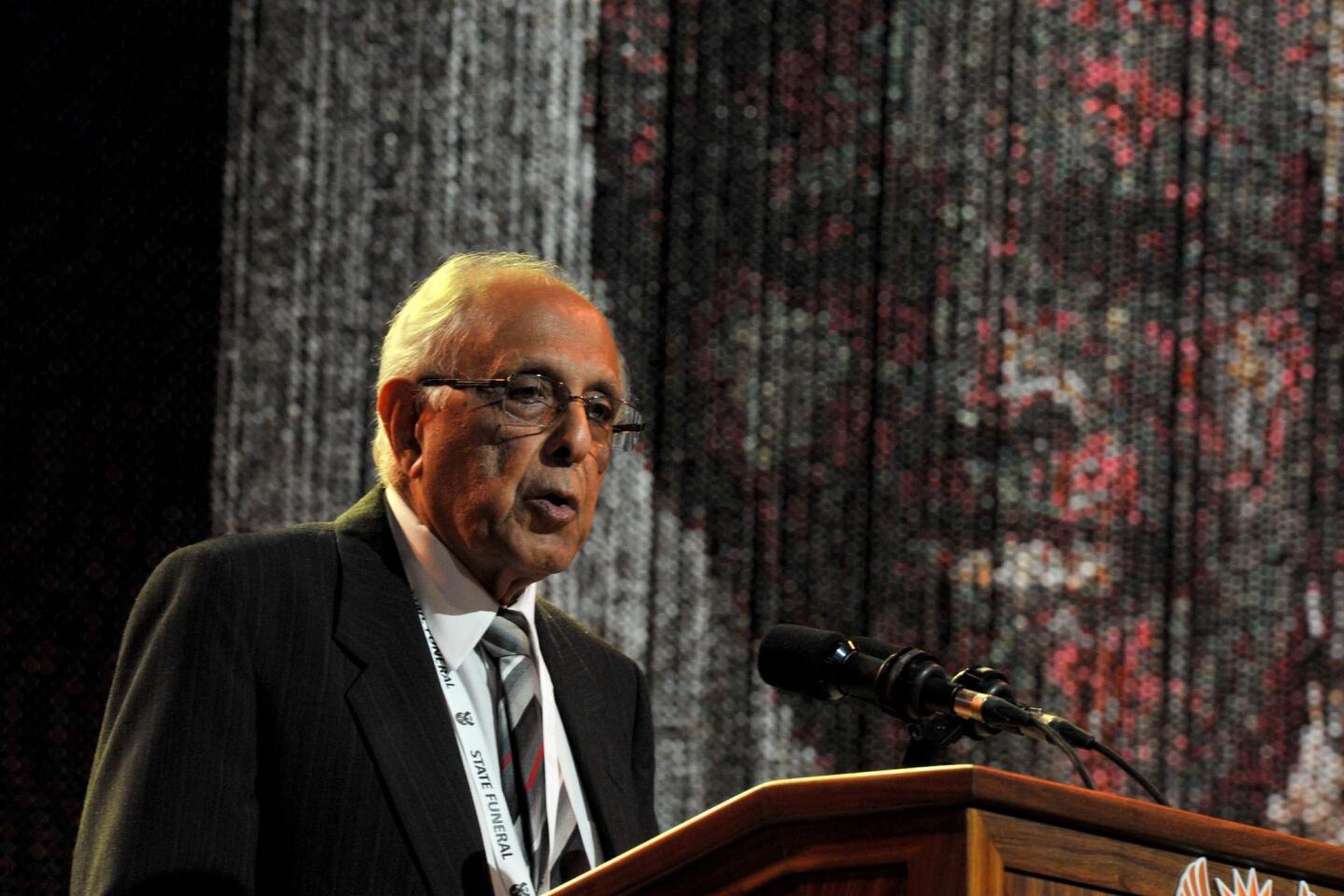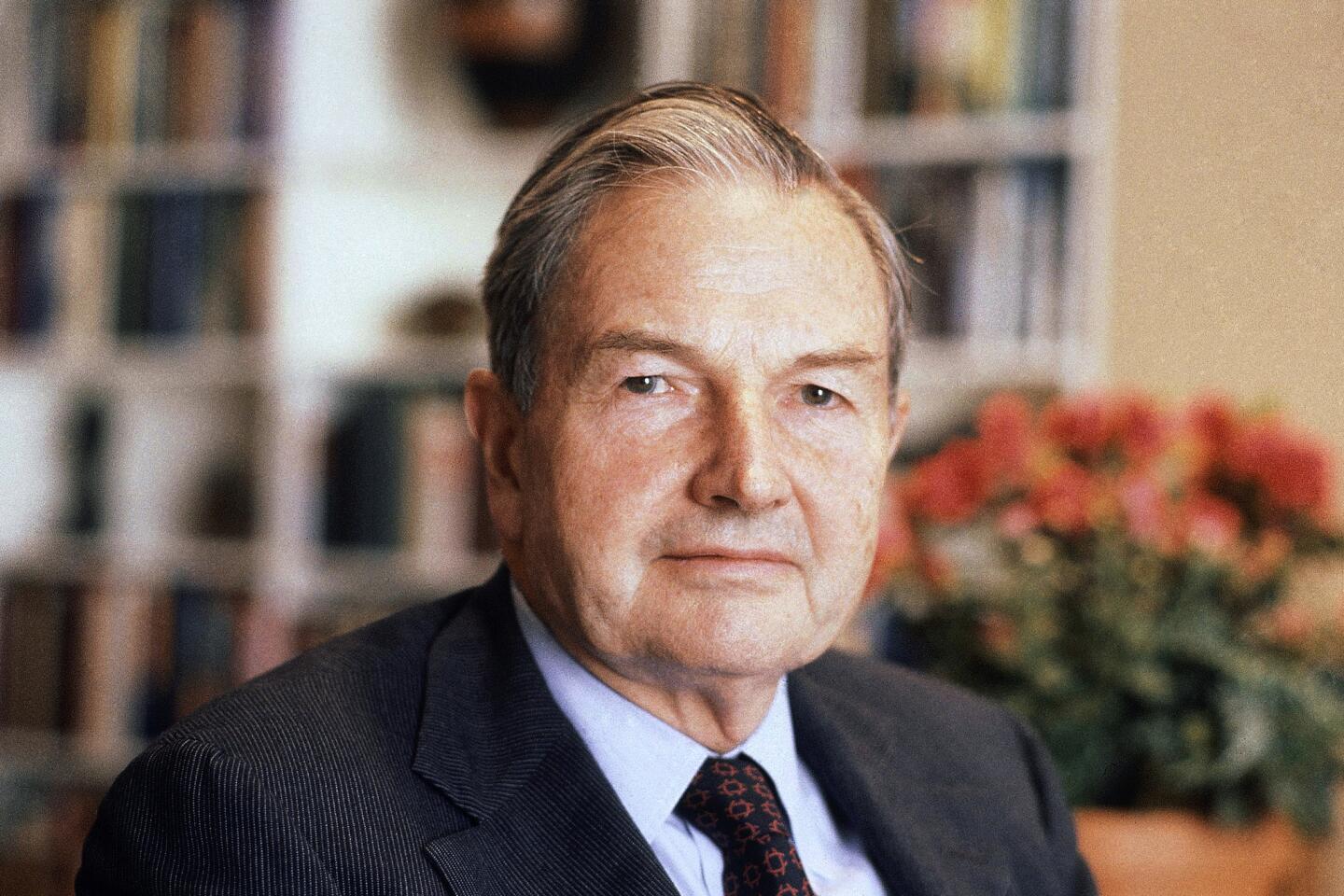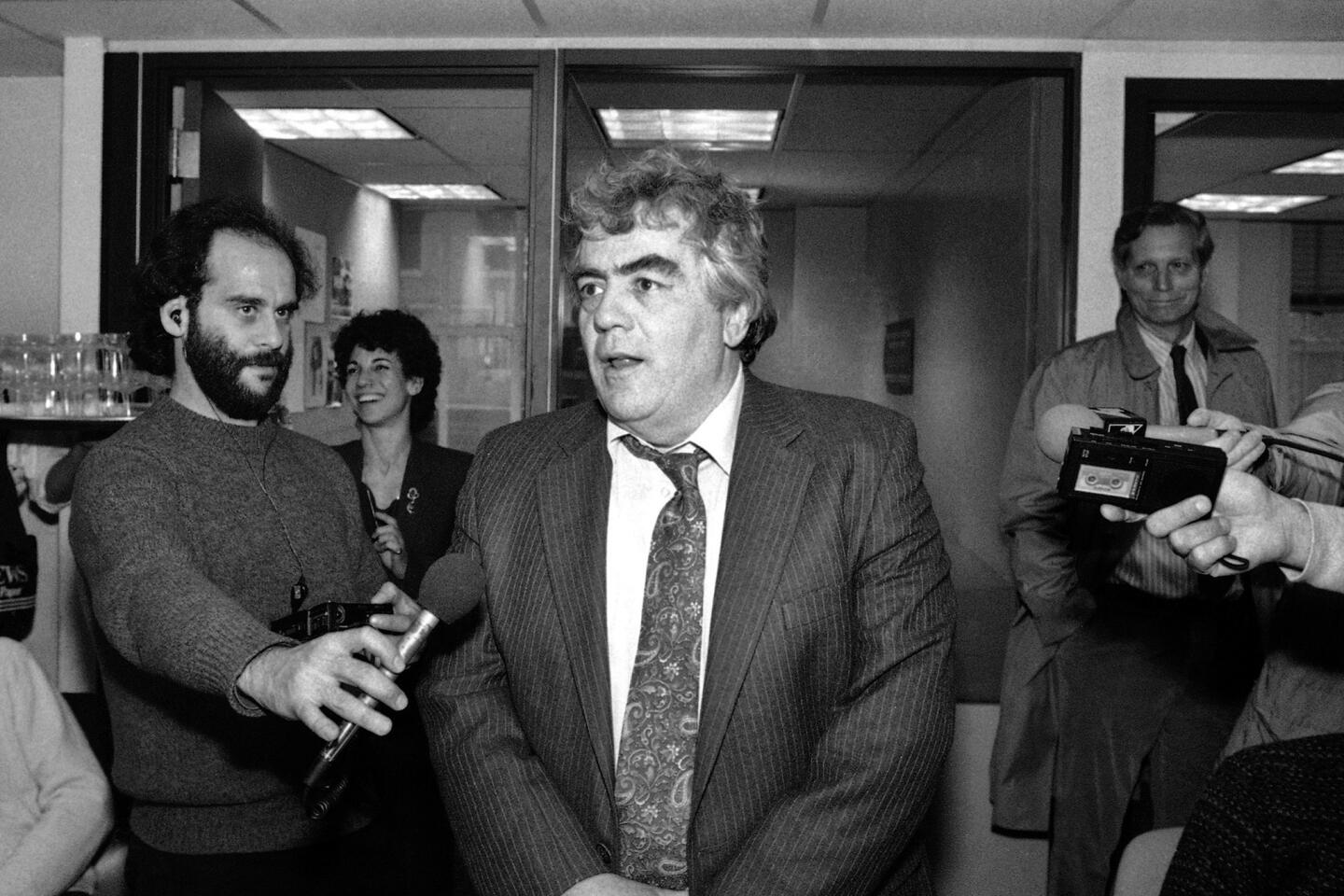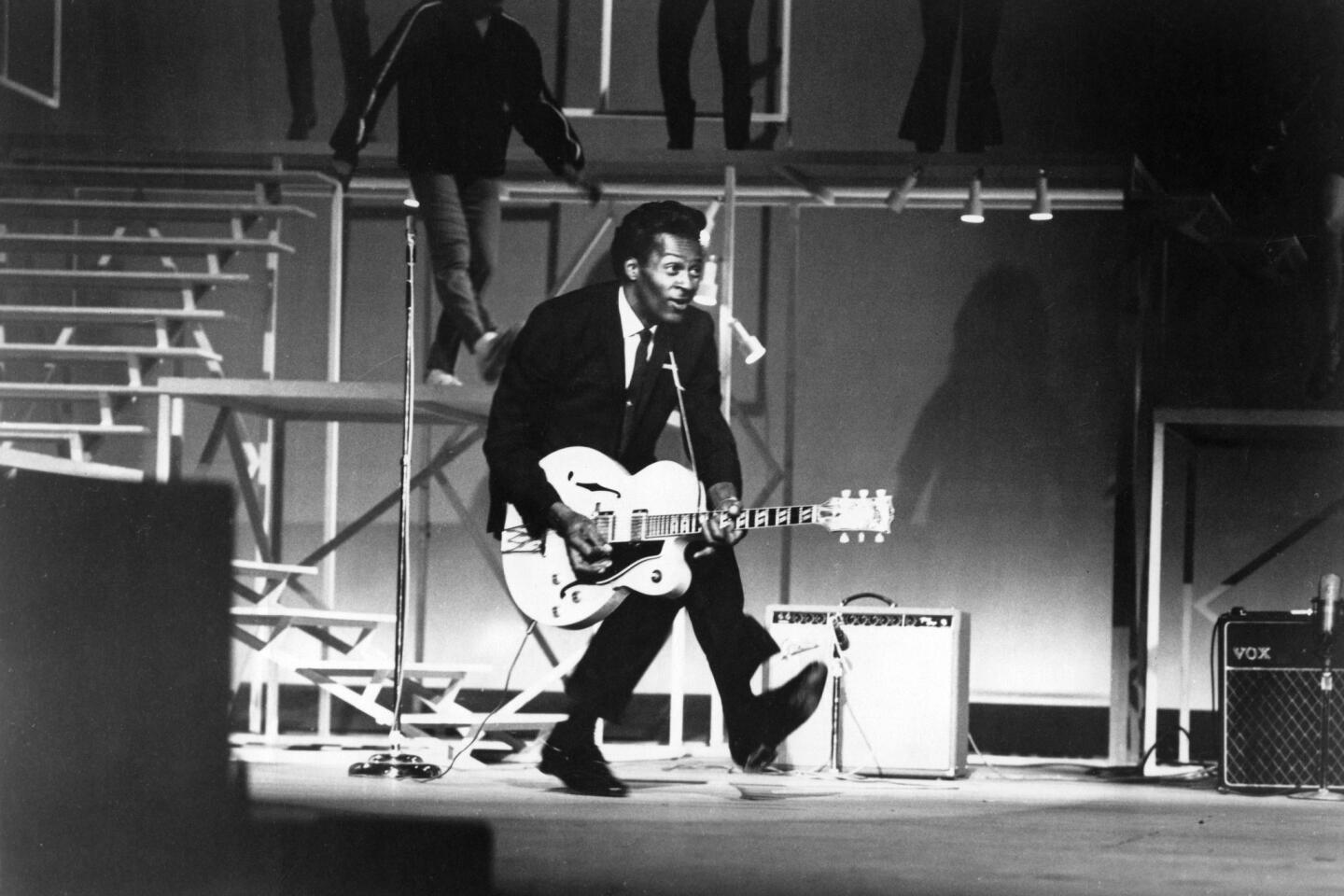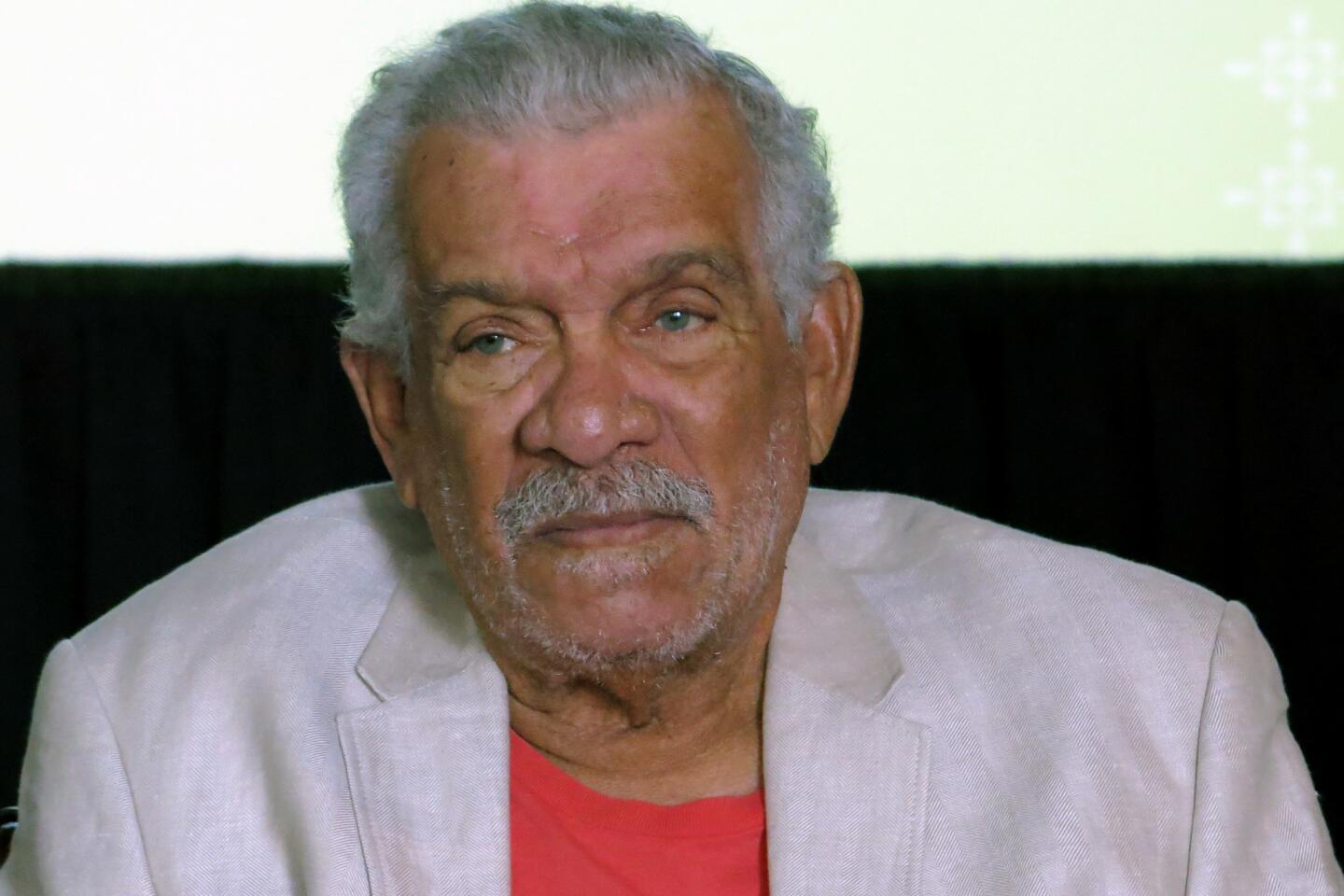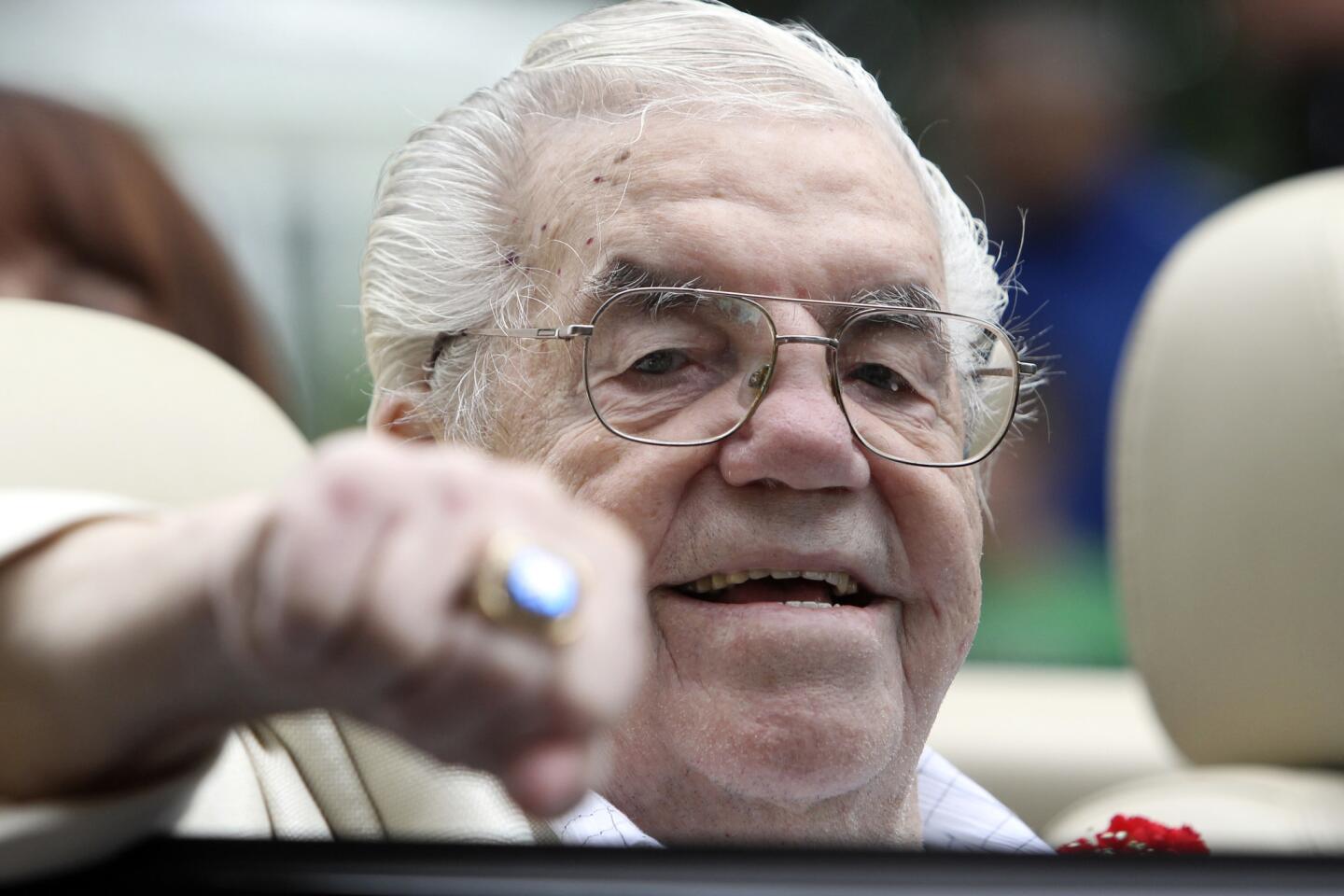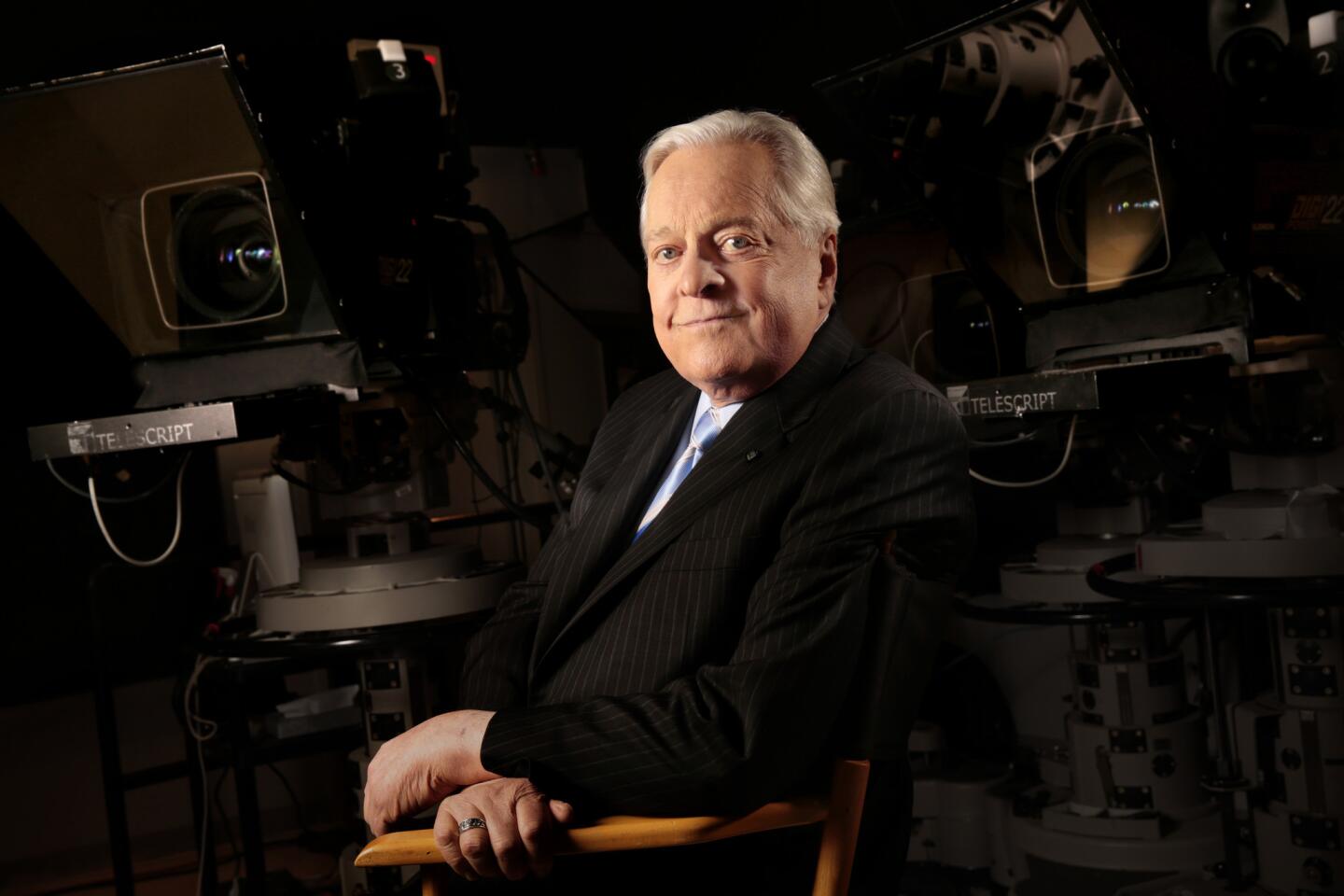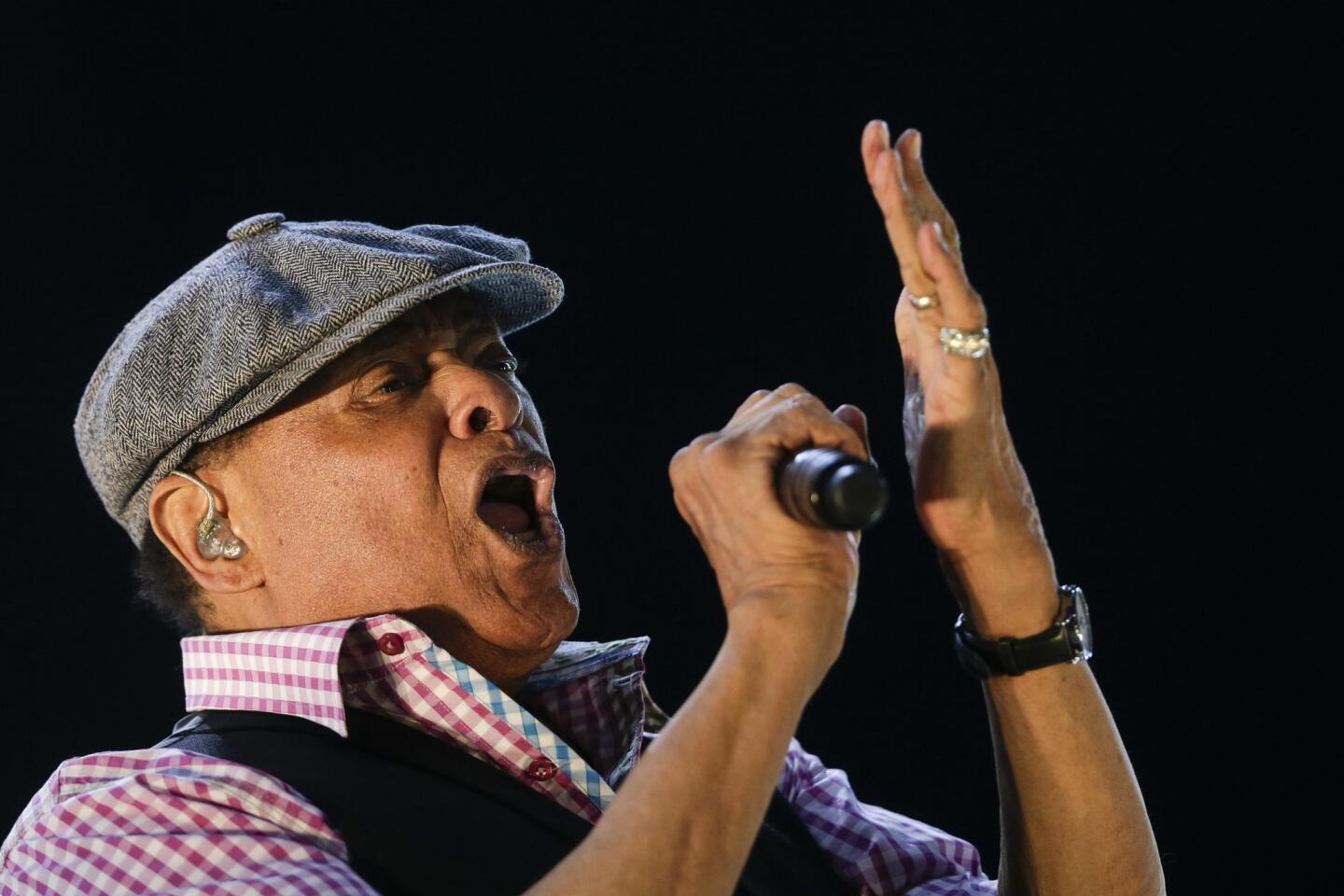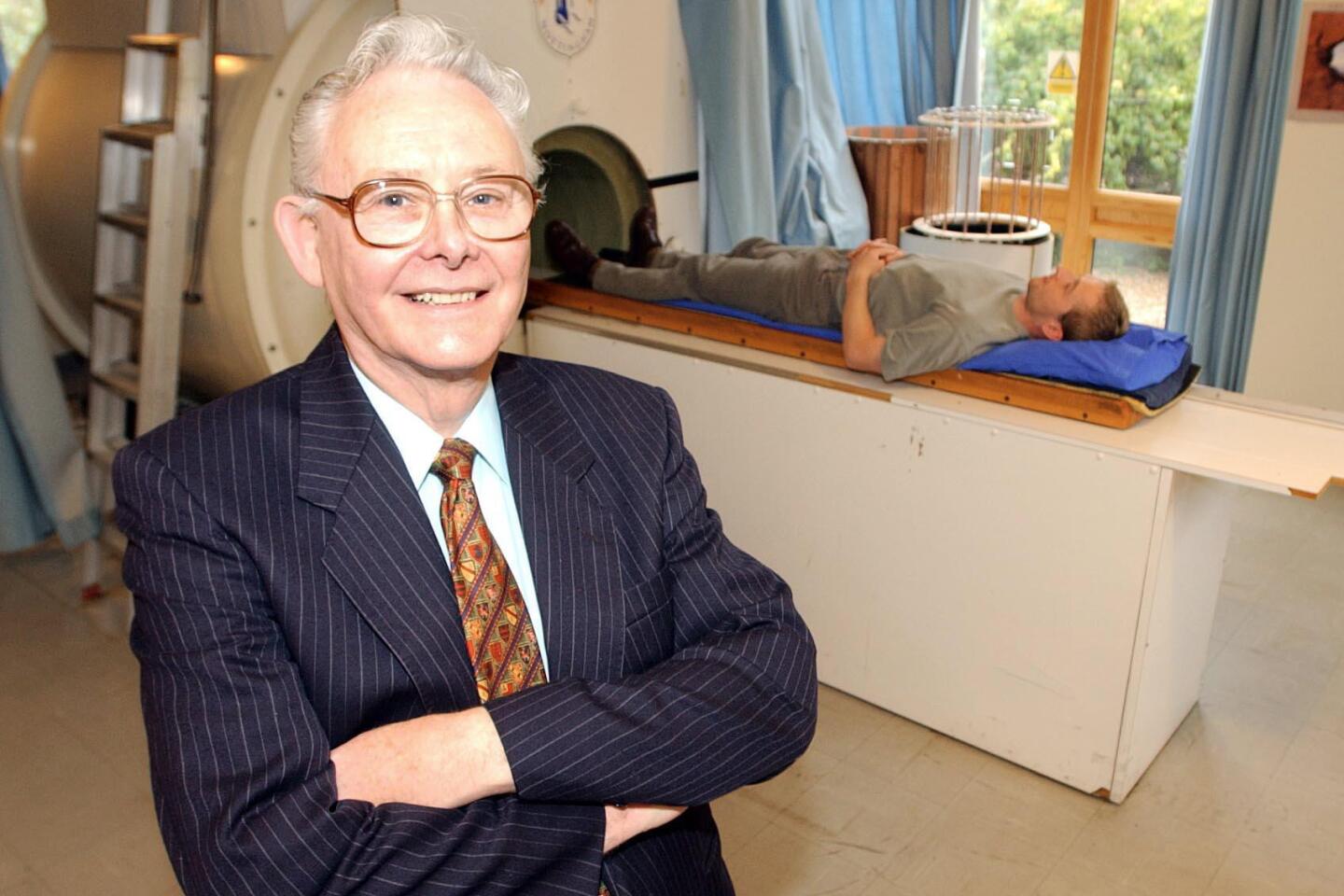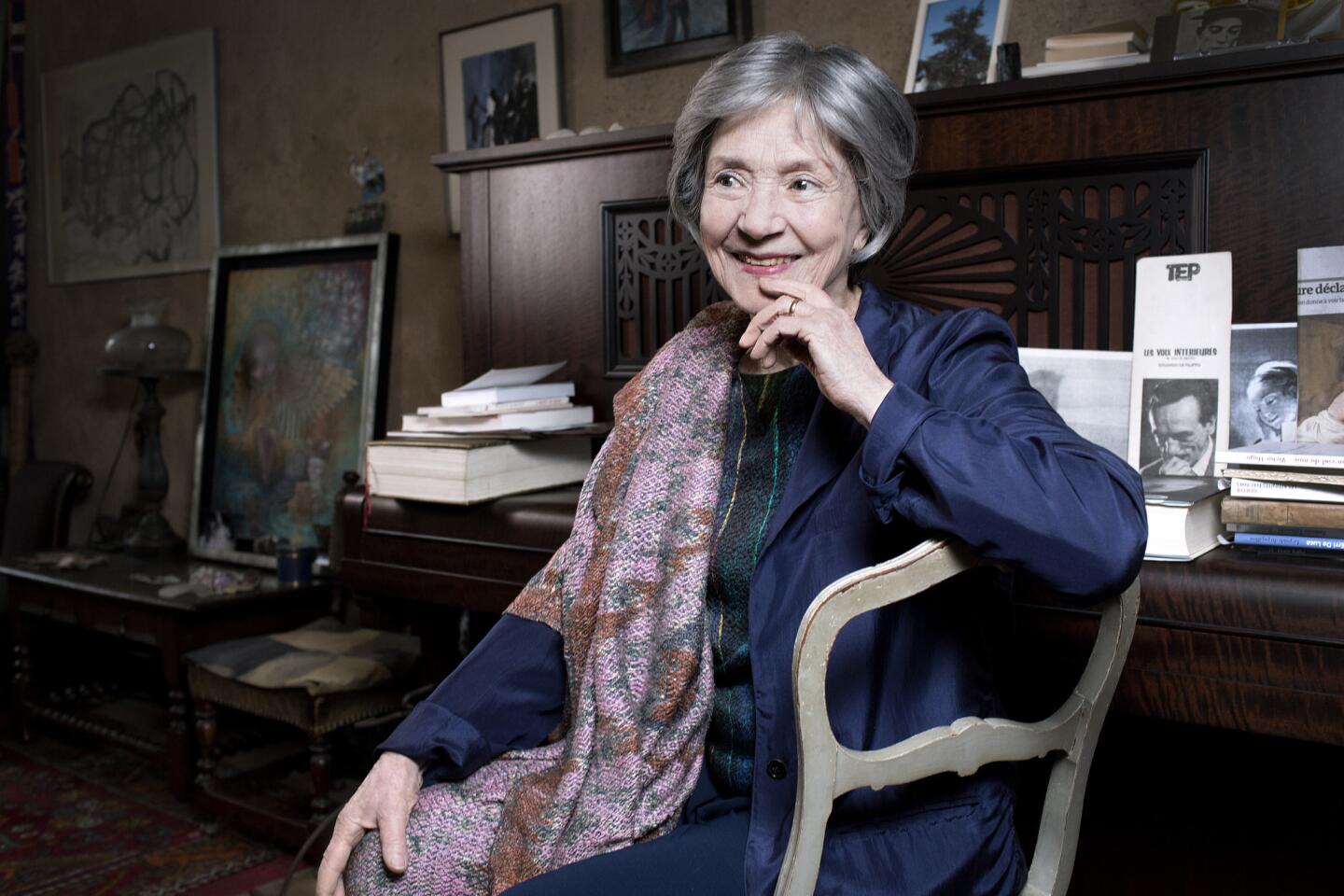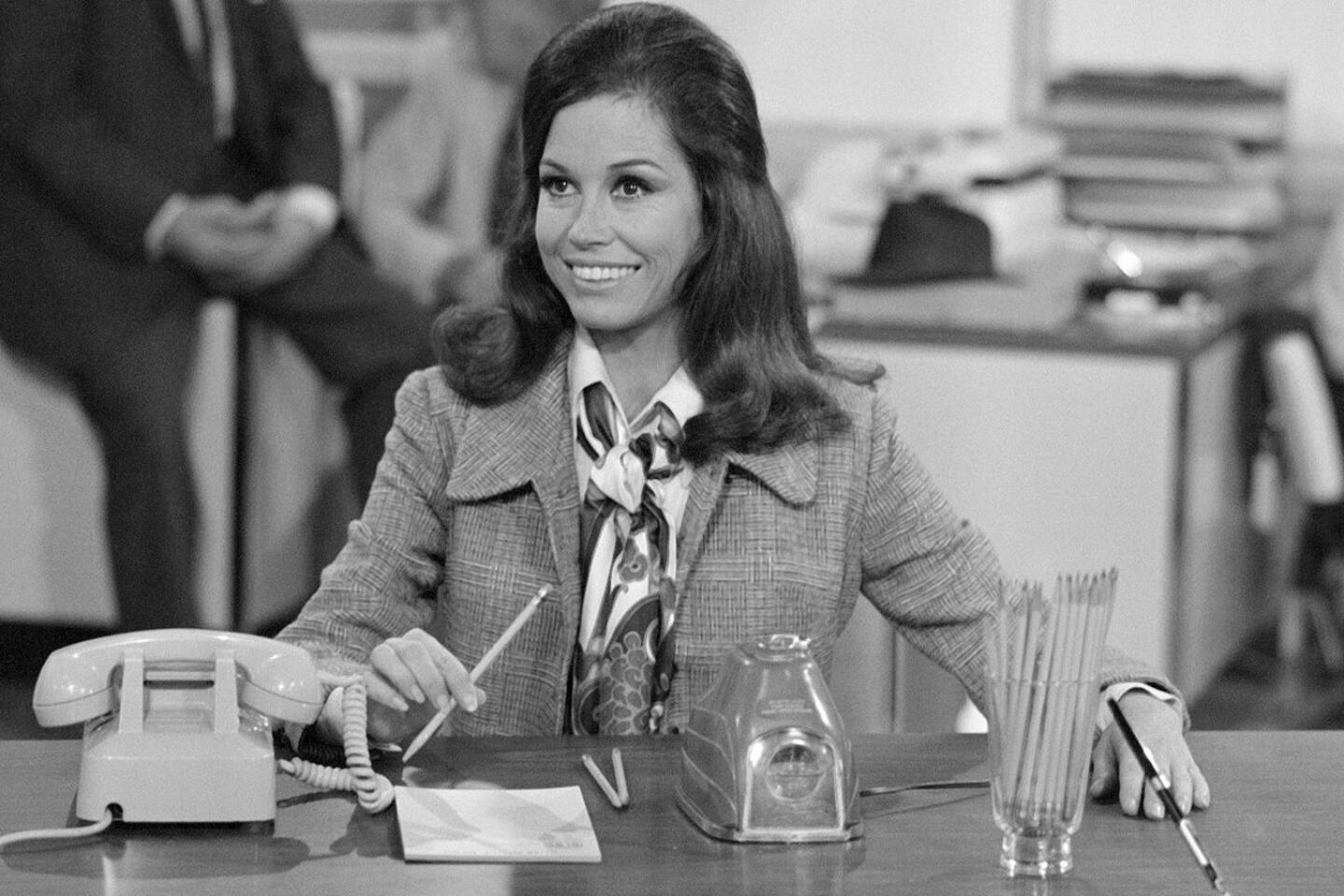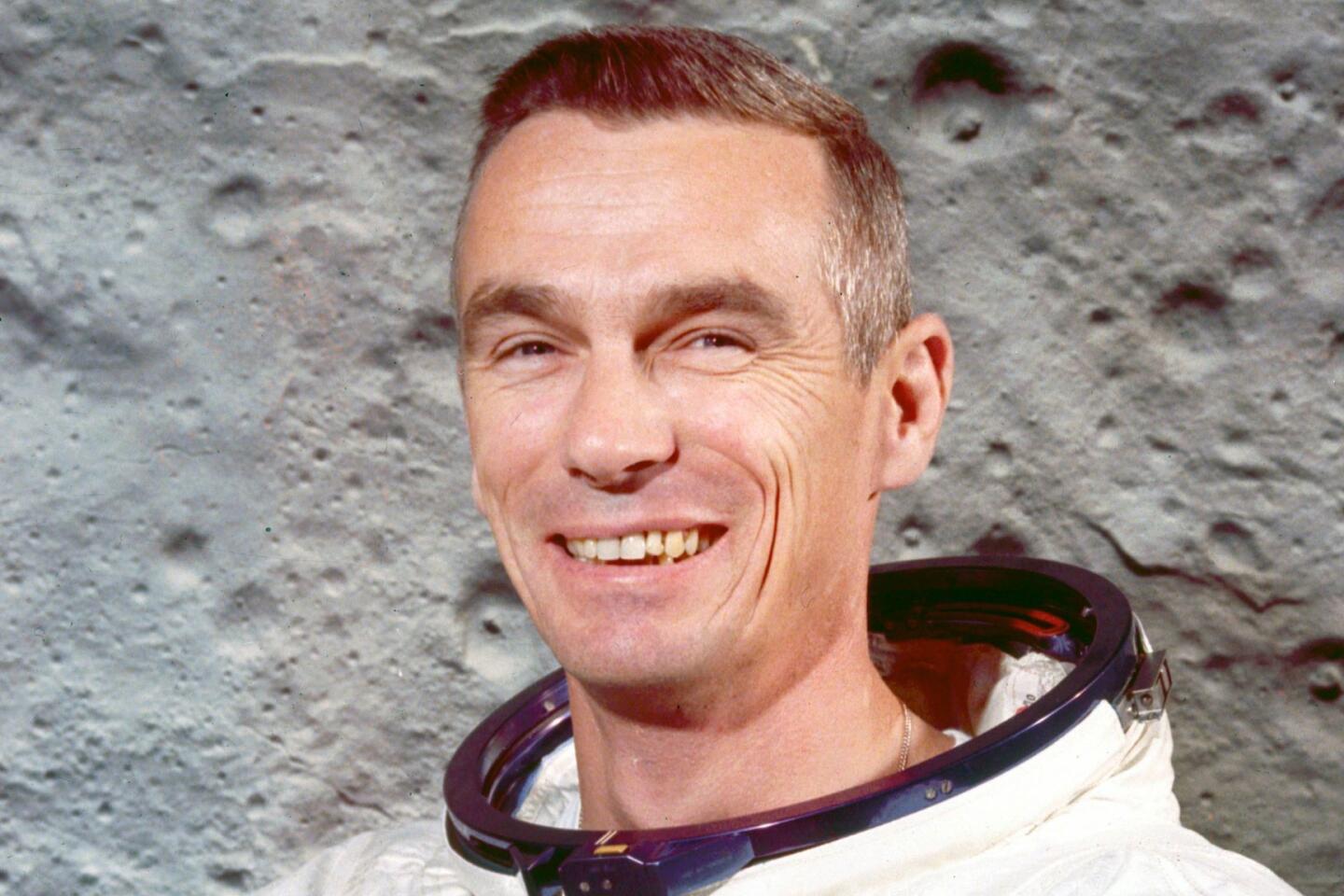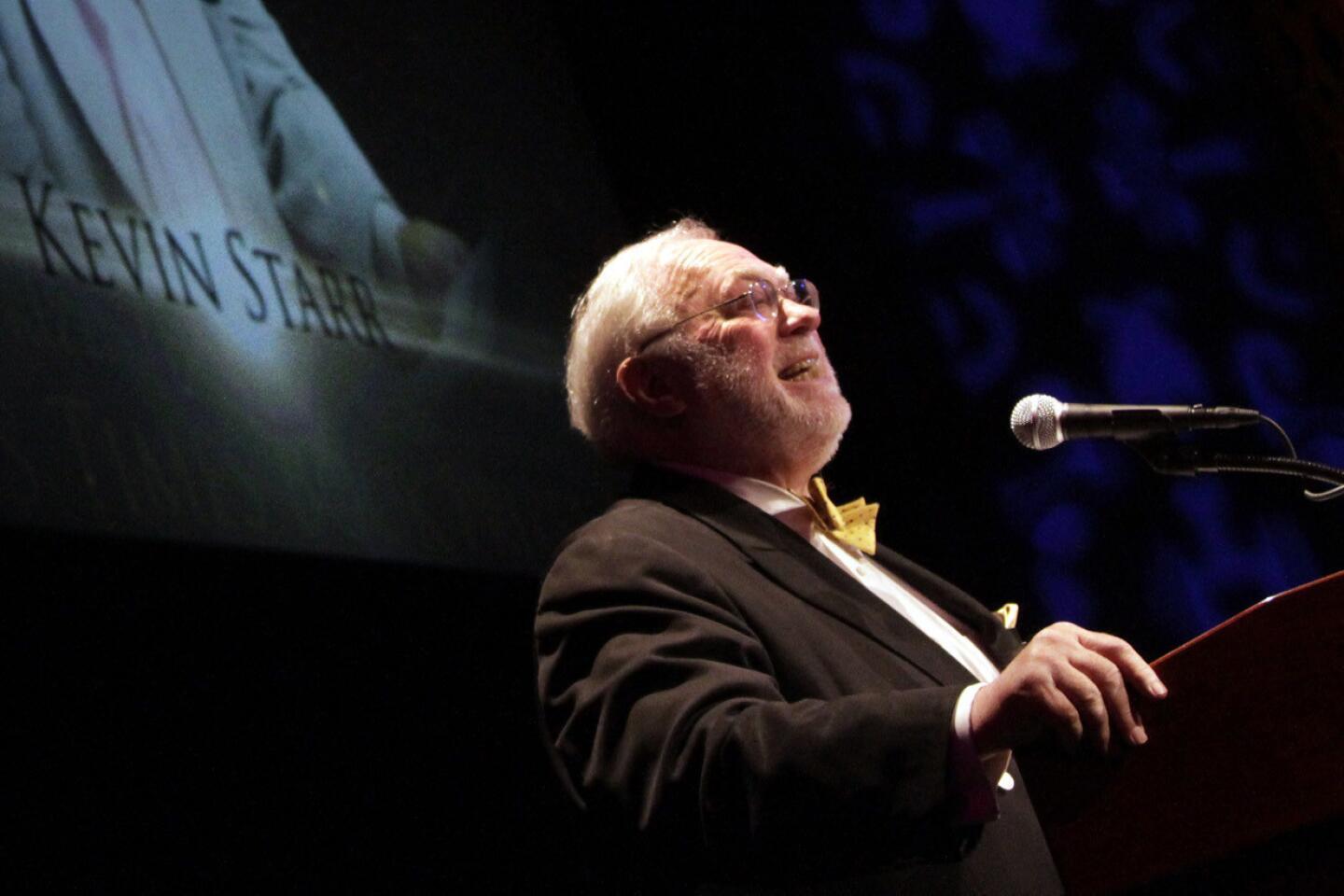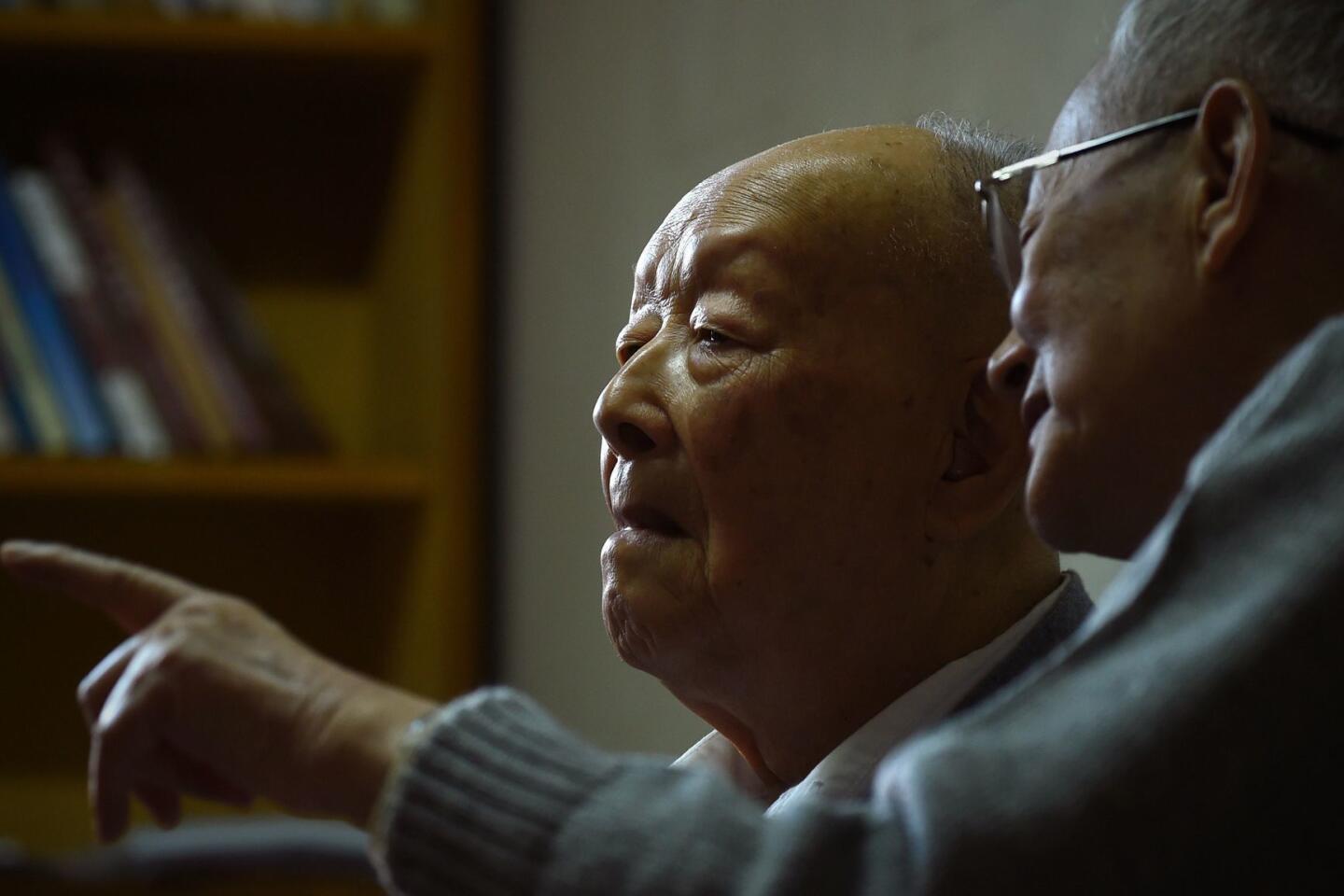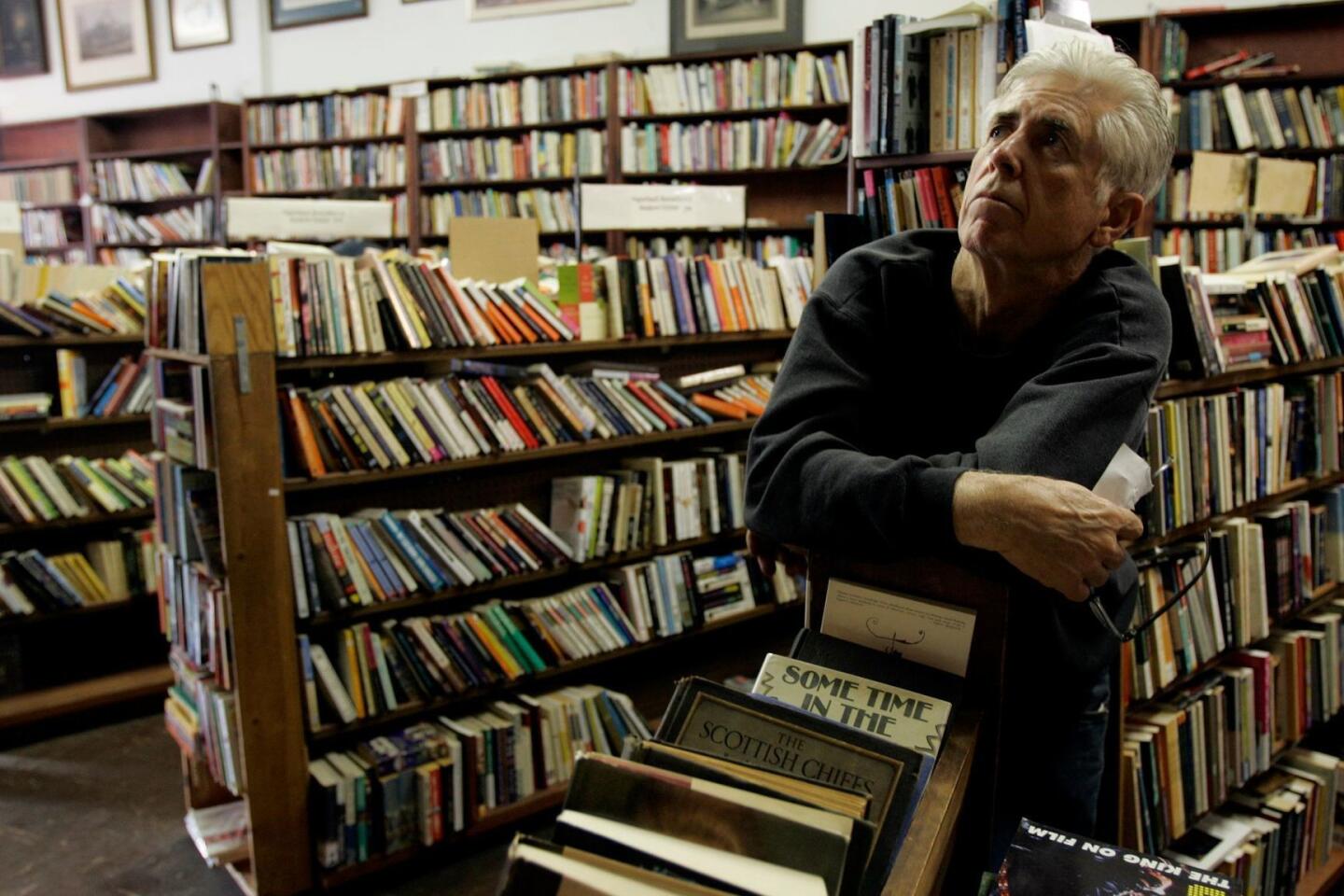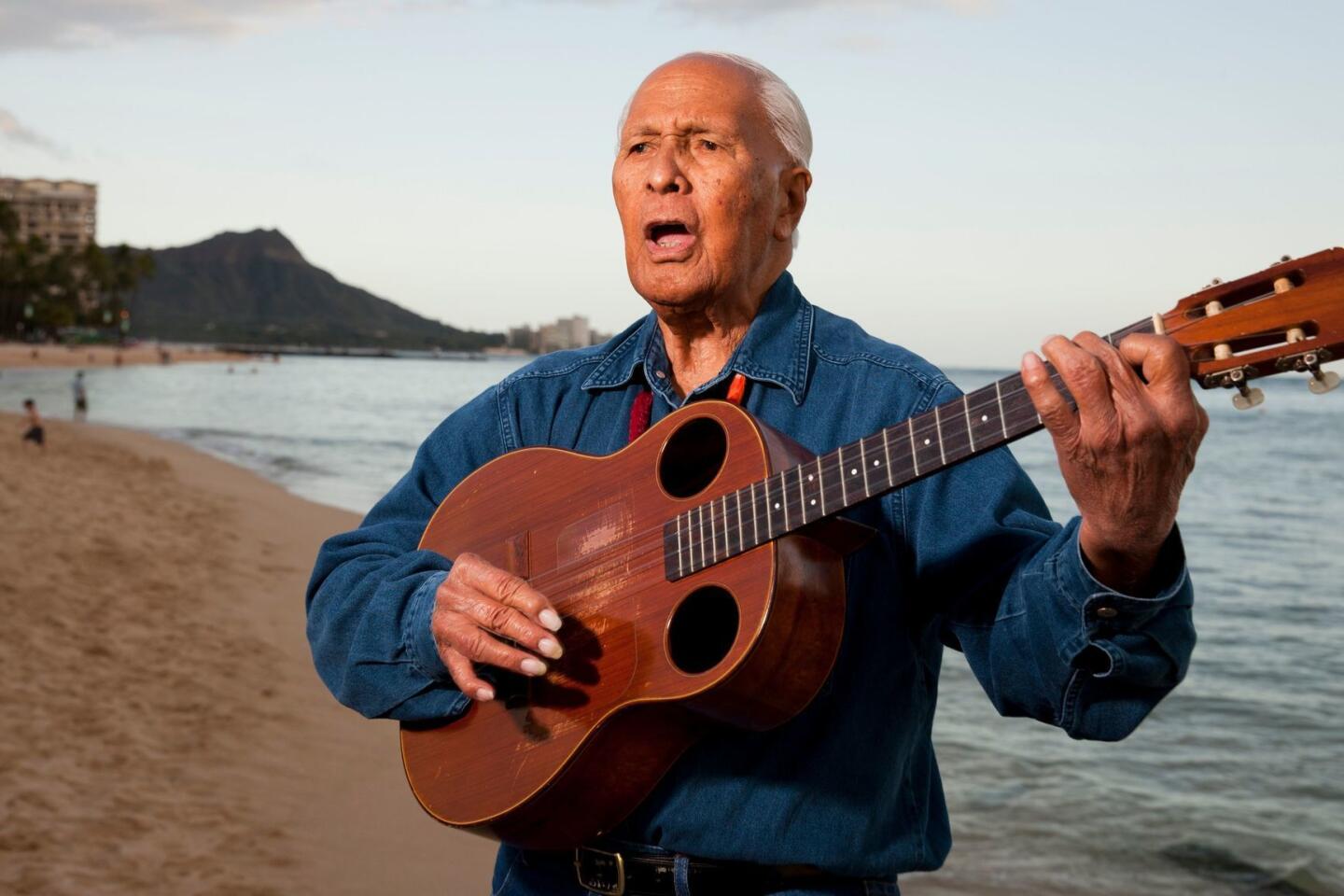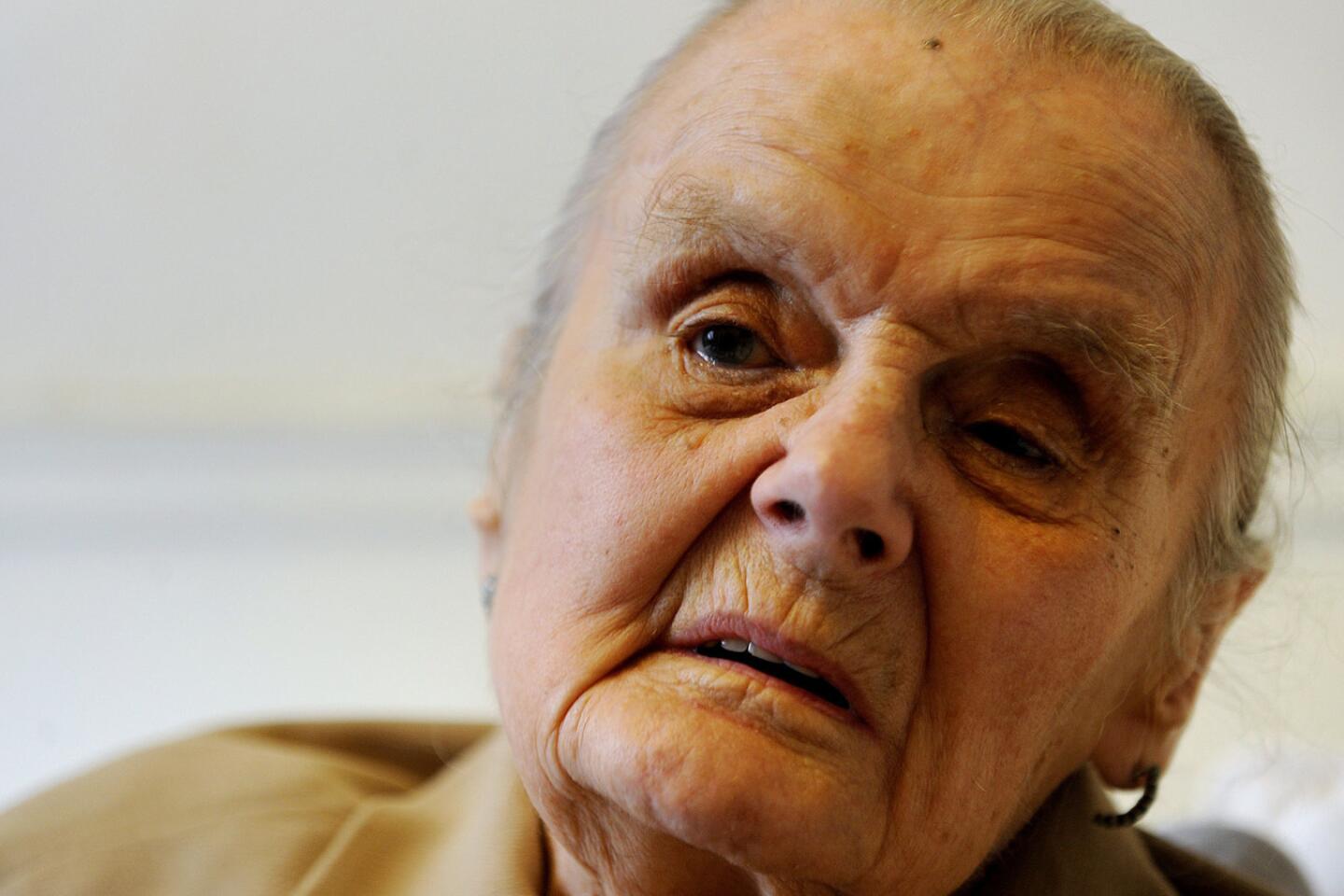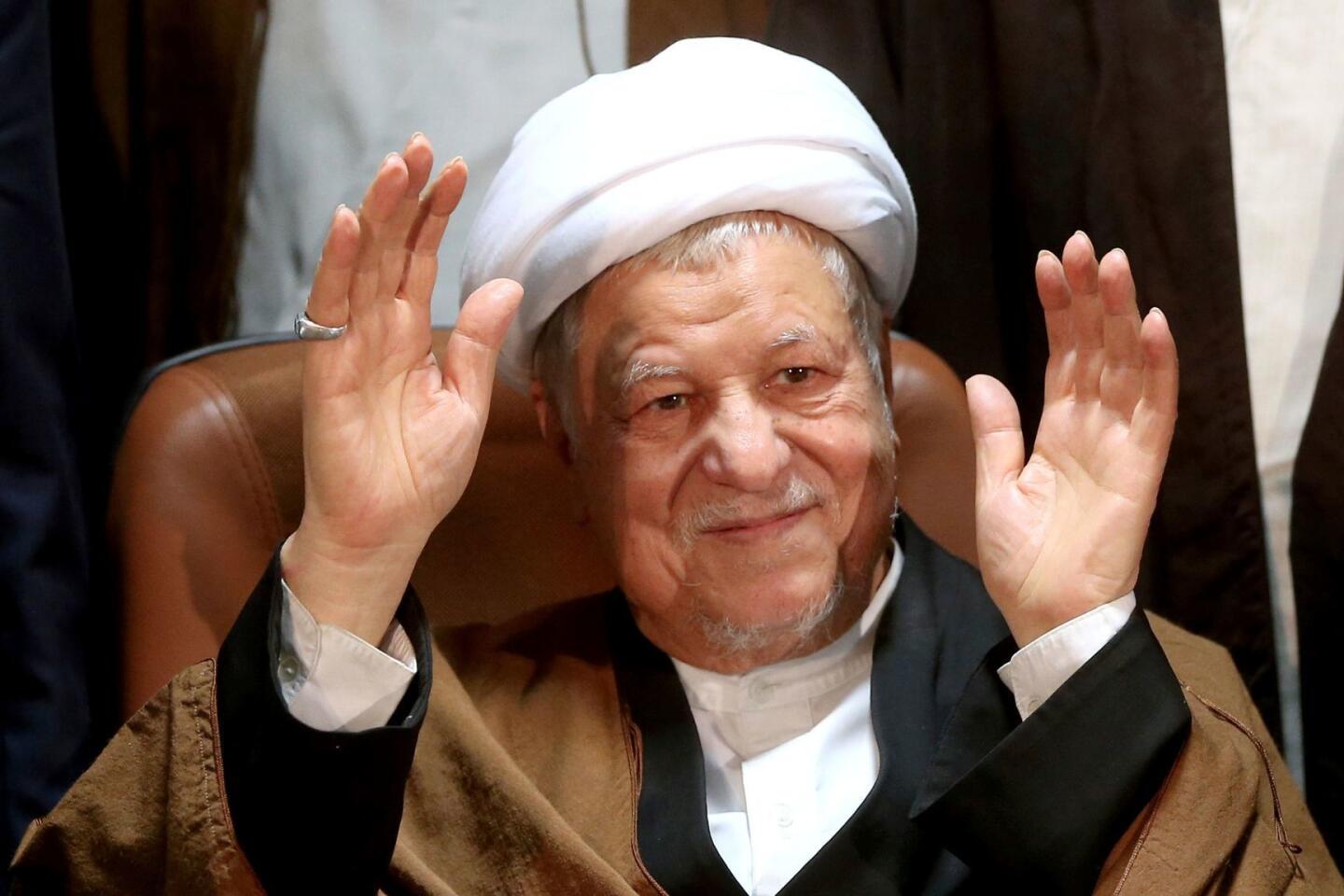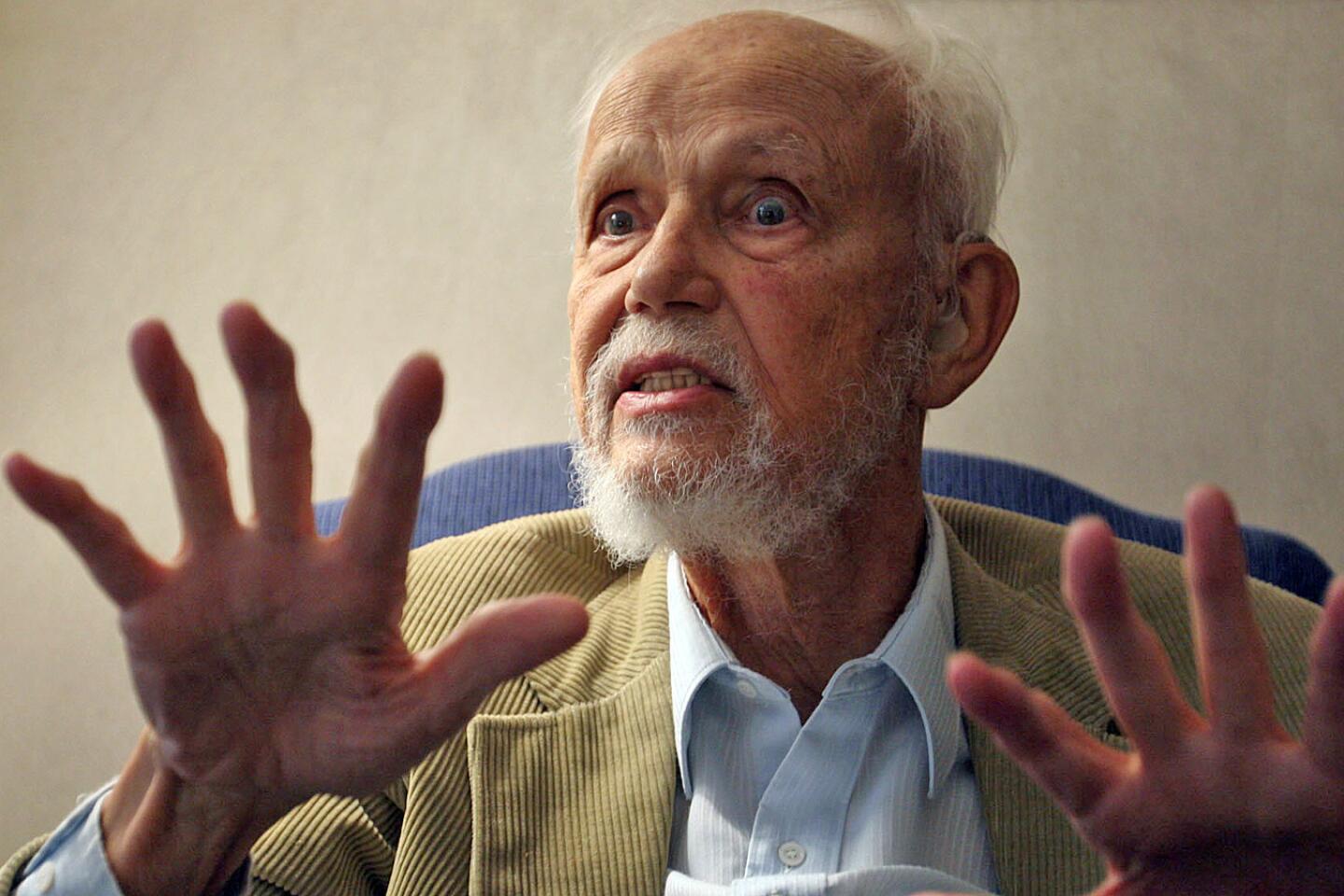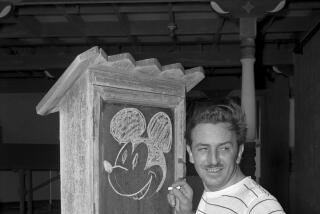Marty Sklar had only just graduated from UCLA, and here he was shadowing Walt Disney, his demanding new boss.
The fledgling writer was unsure how to make himself useful, but he had a mind to scribble down some of the maxims Disney laced into conversation.
“Know your audience.” “Tell one story at a time.” “Wear your guests’ shoes.”
Long after his mentor’s death, Sklar recognized the treasure-trove of wisdom he had started compiling at Walt Disney’s elbow in the late 1950s. He distilled it all into “Mickey’s Ten Commandments,” a widely circulated creed that remains a touchstone in the theme park industry.
The commandments were a cornerstone of Sklar’s own half-century career at Walt Disney Co., where he led the creative development of the Burbank company’s parks, attractions and resorts around the world, including its ventures in the cruise business, housing development and the redesign of Times Square in New York.
Sklar died Thursday in his Hollywood Hills home. No cause of death was given. He was 83.
His retirement in 2006 marked the end of an era: He was one of the last remaining executives to have worked alongside Walt Disney in shaping the company into a global powerhouse. Sklar, who last served as principal creative executive of Walt Disney Imagineering, the storied theme park design and development outfit, was so closely associated with the company’s namesake that he became known as the Sorcerer’s Apprentice.
“He embodied the very best of Disney, from his bold originality to his joyful optimism and relentless drive for excellence,” Disney Chief Executive Robert Iger said in a statement. “He was also a powerful connection to Walt himself. No one was more passionate about Disney than Marty and we’ll miss his enthusiasm, his grace, and his indomitable spirit.”
Martin “Marty” Sklar was born in New Brunswick, N.J., and attended UCLA, where he was editor of the Daily Bruin newspaper. While there, he got a summer job at Disneyland in 1955 — the year the park opened. Sklar, who grew up in Long Beach, had only just started working at Disneyland when Walt Disney asked him to give a 10-minute presentation on how he would create a newspaper for Main Street, U.S.A., the quaint themed area near the park’s entrance.
“I was frightened. Here I was 21 years old, had never worked professionally,” Sklar recalled in a 2002 interview with The Times. “He had time for even the smallest detail, like my newspaper.”
Disney was impressed enough with Sklar that he hired him full time to write marketing and sales brochures for Disneyland after he graduated from UCLA in 1956.
Sklar soon became Walt Disney’s lieutenant, and, according to several former colleagues, developed a reputation for being able to channel the boss’ unique style in speeches and other material he’d write on his behalf.
“Walt and he seemed to think alike,” said Dave Smith, Disney’s former chief archivist, who began at the company in 1970. “Marty really understood Walt more than a lot of people.”N
But unlike his famously charismatic and exacting boss, Sklar was low-key and unimposing. He was deeply revered by imagineers for his mentoring, and his links to the company’s heritage — especially after Disney’s death in 1966.
“He never said, ‘Walt wouldn’t have liked this,’ or ‘This is what Walt would have done,’ but we just knew that is what he was thinking when he gave advice,” said Jim Cora, the former chairman of Disneyland International.
Among Sklar’s signature projects was his effort in the 1960s to promote Disney’s planned resort in Florida, which required government approval.
“Nobody went to central Florida on vacation when we started that project,” Sklar told The Times in 2002. “We had to create a resort destination.”
As part of the pitch to the Florida Legislature, Sklar created a 20-minute movie on the history of the company and its founder. Walt Disney, however, was irritated that he hadn’t seen the script earlier. “After a special screening ... Walt came up to me and said, ‘I didn’t realize anyone was writing my own obituary,’ ” Sklar recalled.
But Disney liked the presentation enough to ask Sklar to develop a 25-minute film on Epcot, a utopian community billed as a showcase for American industry and urban planning. The film played a key role in persuading legislators to sign off on the development of Walt Disney World, which opened in 1971. It was the last project Sklar worked on with Disney before he died, an event that had a major effect on him.
“It actually affected me more than when my father died,” Sklar told The Times. “I finally realized I never had to think like my father, but in order to write for Walt Disney I had to try to think like Walt Disney and use words that he used. It got so deeply into that, it had a tremendous effect on me.”
In 1974, Sklar was named creative leader of Imagineering, whose name is meant to evoke a blend of imagination and engineering. The group was established by Walt Disney in 1952 to dream up Disneyland and create a physical home for Mickey Mouse and other cartoon characters made famous on the silver screen.
For Sklar, whose portfolio of hits included attractions such as It’s a Small World and Space Mountain, it “was always about the guests’ satisfaction,” Cora said.
“Marty and I argued a lot about how certain things ought to be done — design versus operations — but we always came up with a solution that was good for both parties,” said Cora, who retired in 2001. “I always looked to Marty as the keeper of the keys. Marty was kind of our conscience.”
But as with any decades-long career, there were occasional rough patches. Sklar bore at least some of the blame when the Disney California Adventure theme park stumbled out of the gate in 2001 with poor reviews and lackluster attendance. He was sensitive to criticism of the project, but acknowledged that it could benefit from new attractions that would bring it “more in line with other Disney parks.”
“Theme parks are living things,” he said in 2002. “They can be manipulated, changed and grow.”
After Disney made a sizable investment that included the addition of new rides, California Adventure’s fortunes improved, and it has become a success, welcoming 9.3 million visitors last year, according to consulting firm Aecom.
Throughout his career, Sklar called on lessons he learned from Walt Disney. Remembering the chances his boss gave him early on, Sklar through the years recruited young, often inexperienced talent to build his Imagineering team. One of those hires, Andy Sacher, said Sklar gave him his big break when he brought him aboard as an intern in the 1980s. Later, Sacher said, Sklar offered him a job as an imagineer, a position he held in the early 1990s.
“He changed the lives of a lot of people — I am not the only one,” Sacher said. Many current and former Disney employees took to social media to share similar testimonials.
After retiring, Sklar remained an “ambassador” for Imagineering for three more years. He wrote books about Disney, including one centered on “Mickey’s Ten Commandments.” Sklar was also one of a handful of people to have attended the opening of every Disney theme park in the world, including the debut of Shanghai Disneyland in 2016.
“He believed in the company — his heart and soul was in his job,” said Ron Dominguez, a former executive vice president of Walt Disney Attractions who retired in 1994. Dominguez ran into his former colleague at the company’s D23 Expo in Anaheim earlier this month, where they exchanged pleasantries.
“He was in good spirits,” Dominguez said.
Sklar is survived by his wife of 60 years, Leah; son Howard and his wife, Katriina Koski-Sklar; grandchildren Gabriel and Hannah; daughter Leslie; and grandchildren Rachel and Jacob.
1/46
The Santa Barbara writer created one of the first modern hard-boiled female private eyes and topped bestseller lists for decades, inspiring loyal readers to name their daughters after the series’ heroine, Kinsey Millhone. She was 77. Full obituary
(Carolyn Cole / Los Angeles Times) 2/46
The veteran sports broadcaster was long recognized as one of the most versatile and perhaps most enthusiastic announcers of his era. He also was an author, a longtime fixture at Pasadena’s Rose Parade, the host of several sports-themed TV game shows and was still calling San Diego Padres baseball games in his later years. He was 82. Full obituary
(Lenny Ignelzi / Associated Press) 3/46
Lee, elected in 2011, was the first Chinese American mayor of San Francisco, home to the oldest Chinatown in the United States. He oversaw years of dramatic growth that transformed the city’s skyline while also sending real estate values to stratospheric levels. He was 65. Full obituary
(David Butow / For The Times) 4/46
The singer and actor became a TV icon in the 1960s playing the lovably naïve Gomer Pyle on “The Andy Griffith Show” and the spinoff series “Gomer Pyle, U.S.M.C.” He was 87. Full obituary
(CBS Photo Archive / Getty Images) 5/46
Called “the Elvis of Opera” and the “Siberian Express” by some, Hvorostovsky was known for his velvety baritone voice, dashing looks and shock of flowing white hair. He was 55. Full obituary
(Shiho Fukada / Associated Press) 6/46
The syndicated gossip columnist’s mixture of banter, barbs, and bon mots about the glitterati helped her climb the A-list as high as many of the celebrities she covered. She was 94. Full obituary
(Stephen Chernin / Associated Press) 7/46
The fashion iconoclast’s clingy styles helped define the 1980s. Naomi Campbell was a favored model, and Michelle Obama wore his designs as U.S. first lady. He was 77. Full obituary
(Barbara Davidson / Los Angeles Times) 8/46
Kaji was the founding president of the Japanese American National Museum, established in 1992 in Little Tokyo. Years earlier, he established his own accounting firm and was part of a group that founded Merit Savings & Loan, one of the first and one of the few Japanese American-owned banks. He was 91. Full obituary
(Edward Ornelas / Los Angeles Times) 9/46
As one of the founding fathers of rock ’n’ roll, Fats Domino blazed a singular path in the history of popular music. Pounding a piano and booming in a baritone both warm and conversational, he gave the nascent genre a shot of rhythm and blues, jazz and boogie woogie from his native New Orleans. He was 89. Full obituary
(AFP / Getty Images) 10/46
Best known for his portrayal of the sharp-tongued butler in the TV sitcoms “Soap” and “Benson,” Guillaume also played Nathan Detroit in the first all-black version of “Guys and Dolls” and became the first African American to sing the title role in “The Phantom of the Opera,” appearing with an otherwise all-white cast in Los Angeles. He was 89. Full obituary
(Ann Johansson / For The Times) 11/46
Hefner built a publishing and entertainment empire on the idea that Americans should shed their puritanical hang-ups and enjoy sex. As the founder of Playboy magazine, he pitched an alternative standard — swinging singlehood — which portrayed the desire for sex as being as normal as craving apple pie. He was 91. Full obituary
(George Brich / Associated Press) 12/46
The prolific character actor and occasional leading man brought a soulful, hangdog presence to such varied films as “Alien,” “Paris, Texas,” “Repo Man” and “Pretty in Pink,” becoming a favorite of film fans and directors alike. He was 91. Full obituary
(Richard Derk / Los Angeles Times) 13/46
The gay rights pioneer brought a Supreme Court case that struck down parts of a federal law that banned same-sex marriage and led to federal recognition for gay spouses. She was 88. Full obituary
(Richard Drew / Associated Press) 14/46
Stomping over miniature bridges and buildings in a rubber suit, Nakajima portrayed Godzilla, the fire-breathing, screeching monster that became Japan’s star cultural export and an enduring symbol of the pathos and destruction of the Atomic Age. Nakajima said he invented the character from scratch, and developed it by going to a zoo to study how elephants and bears moved. He was 88. Full obituary
(Junji Kurokawa / Associated Press) 15/46
Kanno spent what should have been his final high school years confined to a World War II-era internment camp. He went on to become one of America’s first Japanese American mayors as an early-day politician in Orange County. He was 91. Full obituary
(Mark Boster / Los Angeles Times) 16/46
Romero will be remembered best for co-writing and directing “Night of the Living Dead.” The “Living Dead” franchise went on to create a subgenre of horror movies whose influence across the decades has endured, seen in films like “The Purge” and TV shows such as “The Walking Dead.” He was 77. Full obituary
(Amy Sancetta / Associated Press) 17/46
The Oscar-winning actor appeared in classic films such as Alfred Hitchcock’s “North By Northwest” and starred in the “Mission: Impossible” television series in the 1960s. He won his Academy Award for his portrayal of washed-up Bela Lugosi in Tim Burton’s “Ed Wood.” He was 89. Full obituary
(CBS Photo Archive / CBS via Getty Images) 18/46
The French survivor of Nazi concentration camps and a European Parliament president was one of France’s most prominent female politicians. She was best known in France for leading the heated battle to legalize abortion in the 1970s. France’s abortion rights law is still known four decades later as the “Loi Veil.” She was 89. Full obituary
(AFP / Getty Images) 19/46
The British author created Paddington Bear, the marmalade-loving teddy in a duffel coat and floppy hat. His creation become an icon immortalized in print, on screens and as countless stuffed toys. Bond was 91. Full obituary
(Sang Tan / Associated Press) 20/46
Pressman, center, was an Emmy-winning journalist who worked at WNBC for more than 50 years after stints at New Jersey’s Newark Evening News and the New York World Telegram and Sun. He covered the 1956 sinking of the Italian ocean liner Andrea Doria, riots at the 1968 Democratic National Convention, the Woodstock festival in 1969 and the terror attacks on Sept. 11, 2001. He was 93. Full obituary
(Ron Frehm / Associated Press) 21/46
The Santa Cruz entrepreneur opened one of the world’s first surf shops and pioneered the neoprene wetsuit that helped popularize year-round cold-water surfing. He lost his eye in a surfing accident. He was 94. Full obituary
(Dan Coyro / Associated Press) 22/46
The former dictator of Panama often played opposing sides of Cold War-era political battles until he was ousted by his on-again, off-again sponsors and toppled in a U.S. invasion. He was 83. Full obituary
(AFP / Getty Images) 23/46
Deford was an award-winning sports journalist and commentator whose elegant reportage was a staple for years at Sports Illustrated and National Public Radio. He was the first sportswriter awarded the National Humanities Medal. In 2013, President Obama honored him for “transforming how we think about sports.” He was 78. Full obituary
(Carolyn Kaster / AP) 24/46
Perenchio deftly pulled the levers of power to create culturally defining media events, propel political candidates, collect masterpiece artworks and become one of the richest men in Los Angeles. In late 2014, he announced that he would leave much of his collection — at least 47 works valued at more than $500 million — to the Los Angeles County Museum of Art. He was 86. Full obituary
(Genaro Molina / Los Angeles Times) 25/46
The polarizing Fox News founder was credited with turning the news channel into a ratings powerhouse over his 20 years at the helm. He was ousted from the network following sexual harassment charges. He was 77. Full obituary
(Jennifer S. Altman / For The Times) 26/46
The former child star played Joanie Cunningham in the sitcoms “Happy Days” and “Joanie Loves Chachi.” Her more recent credits included “The Love Boat” and “Murder, She Wrote.” She was 56. Full obituary
(Wally Fong / Associated Press) 27/46
Using insult as his weapon of choice and a quick, knowing smirk as his defense, Rickles delighted audiences with his brand of aggressively caustic humor that targeted everyone from unknown “hockey pucks” to big-name celebrities. He was 90. Full obituary
(Jay L. Clendenin / Los Angeles Times) 28/46
A close confidante of Nelson Mandela, Kathrada dedicated his life to opposing apartheid and racism. An African National Congress activist, he played a major role in South Africa’s liberation struggle. He was 87. Full obituary
(Kopano Tlape / EPA) 29/46
The billionaire businessman and philanthropist was the last in his generation of one of the country’s most famously philanthropic families. He was 101. Full obituary
(D. Pickoff / Associated Press) 30/46
The Pulitzer Prize-winning newspaper columnist was part of the wave of practitioners of what came to be known as New Journalism: a group of gifted writers that included Tom Wolfe, Gay Talese, Hunter S. Thompson, Joan Didion and others who reported on the social and cultural upheavals of the 1960s and ’70s. His writing made him a New York City institution for more than 40 years. He was 88. Full obituary
(Mario Cabrera / Associated Press) 31/46
One of the founding fathers of rock ’n’ roll, Berry was an innovator who designed much of the music’s sonic blueprint and became his era’s most creative lyricist. He was 90. Full obituary
(Michael Ochs Archives / Getty Images) 32/46
The Nobel-prize winning poet was known for capturing the essence of his native Caribbean. His work was widely praised for its depth and bold use of metaphor, and its mix of sensuousness and technical prowess. He was 87. Full obituary
(Berenice Bautista / Associated Press) 33/46
The Boxing Hall of Fame trainer and manager handled the careers of 19 champions including heavyweight Evander Holyfield. Duva with his family built the promotional company Main Events into one of boxing’s powerhouses. He was 94. Full obituary
(Mike Groll / Associated Press) 34/46
The silver-haired and dapper Osborne was a bona fide movie connoisseur who displayed his wide knowledge of films as the genial host on Turner Classic Movies since its launch in 1994. Osborne was a longtime columnist for the Hollywood Reporter and the “official biographer” of the Academy Awards. He was 84. Full obituary
(Carolyn Cole / Los Angeles Times) 35/46
Dubbed the “Acrobat of Scat” for his vocal delivery, Jarreau was admired by fans for his imaginative and improvisational qualities. He is best known for his single “We’re in This Love Together” from 1981. He is the only Grammy vocalist to win in the jazz, pop and R&B categories. He was 76. Full obituary
(Felipe Dana / Associated Press) 36/46
Mansfield won the Nobel Prize for helping to invent MRI scanners. In 1978, he was the first person to step inside a whole-body MRI scanner so it could be tested on a human subject. His work, alongside chemist Paul Lauterbur, revolutionized the detection of disease by revealing internal organs without the need for surgery. He was 83. Full obituary
(David Jones / Associated Press) 37/46
Riva’s portrayal of an elderly woman in the 2012 end-of-life drama “Amour” earned her international acclaim and the distinction of being the oldest nominee for a lead actress Oscar. She was 89. Full obituary
(Francois Mori / Associated Press) 38/46
Moore rose to stardom on “The Dick Van Dyke Show” in the 1960s and went on to headline “The Mary Tyler Moore Show,” a highly successful sitcom in the 1970s (pictured). The actress and her television character became so entwined that Moore became a role model for women who sought to challenge the conventions of marriage and family. She was 80. Full obituary
(CBS Photo Archive / Getty Images) 39/46
Cernan, commander of NASA’s Apollo 17 mission, set foot on the moon in December 1972 during his third space flight. He was the last of only a dozen men to walk on the moon. He returned to Earth with a message of “peace and hope for all mankind.” He died at 82. Full obituary
(SSPL / Getty Images) 40/46
The former California state librarian wrote rich cultural, economic and political histories on the birth, growth and maturation of the Golden State. He captured the state’s rise in influence and its singular hold on the public imagination in his sweeping “Americans and the California Dream” series. Full obituary
(Lawrence K. Ho / Los Angeles Times) 41/46
Youguang was a linguist considered to be the father of modern China’s Pinyin Romanization writing system. Adopted by the People’s Republic in 1958, Pinyin has virtually become the global standard because of its simplicity and consistency. He was 111. Full obituary
(Wang Zhao / AFP/Getty Images) 42/46
Dutton was the owner of Dutton’s Books, a Los Angeles landmark with its overflowing shelves and hard-to-find titles. Dutton’s Books on Laurel Canyon Boulevard, along with sister locations in Burbank and downtown Los Angeles, was at the very center of literary L.A. when it opened in 1961. He was 79. Full obituary
(Gina Ferazzi / Los Angeles Times) 43/46
Kamae was one of the most influential Hawaiian musicians of the last half-century and a filmmaker who painstakingly documented the culture and history of the islands. He had long been the face of the Sons of Hawaii, a popular recording group and a pioneering force in traditional island music. He was 89. Full obituary
(Marco Garcia / For The Times) 44/46
The British war correspondent was the first journalist to report the Nazi invasion of Poland that marked the beginning of World War II. She won major British journalism awards, and was made an Officer of the Order of the British Empire by Queen Elizabeth II. She was 105. Full obituary
(Mike Clarke / AFP/ Getty Images) 45/46
The former Iranian president was an aide to Iran’s revolutionary supreme leader, the late Ayatollah Ruhollah Khomeini. Although Rafsanjani’s legacy was tarnished by allegations of corruption and authoritarianism, his backing helped moderate President Hassan Rouhani win election in 2013, setting the Islamic Republic on a path to ending its disputed nuclear program and easing its isolation from the West. He was 82. Full obituary
(Ebrahim Noroozi / Associated Press) 46/46
A scholar of world religions, Smith is best known for his work “The Religions of Man,” first published in 1958. It was reissued as “The World’s Religions” in 1991 and has sold about 2 million copies. His informed yet accessible prose led many laymen to read his books as their introduction to religions of the East and West. He was 97. Full obituary
(Tina Fineberg / Associated Press) daniel.miller@latimes.com
richard.verrier@latimes.com
ALSO
June Foray dies; voice actress behind Rocky the Flying Squirrel and scores of other characters
Jack Shaheen dies; scholar persuaded Disney to alter ‘Aladdin’ as he fought Hollywood’s racial stereotypes
Margo Chase, who designed for Madonna and ‘Buffy the Vampire Slayer,’ dies
UPDATES:
3:06 p.m.: This article was updated with additional reaction to Sklar’s death.
10:40 a.m.: This article was updated with additional details about Sklar’s career.
This article was originally published at 12:25 a.m.
